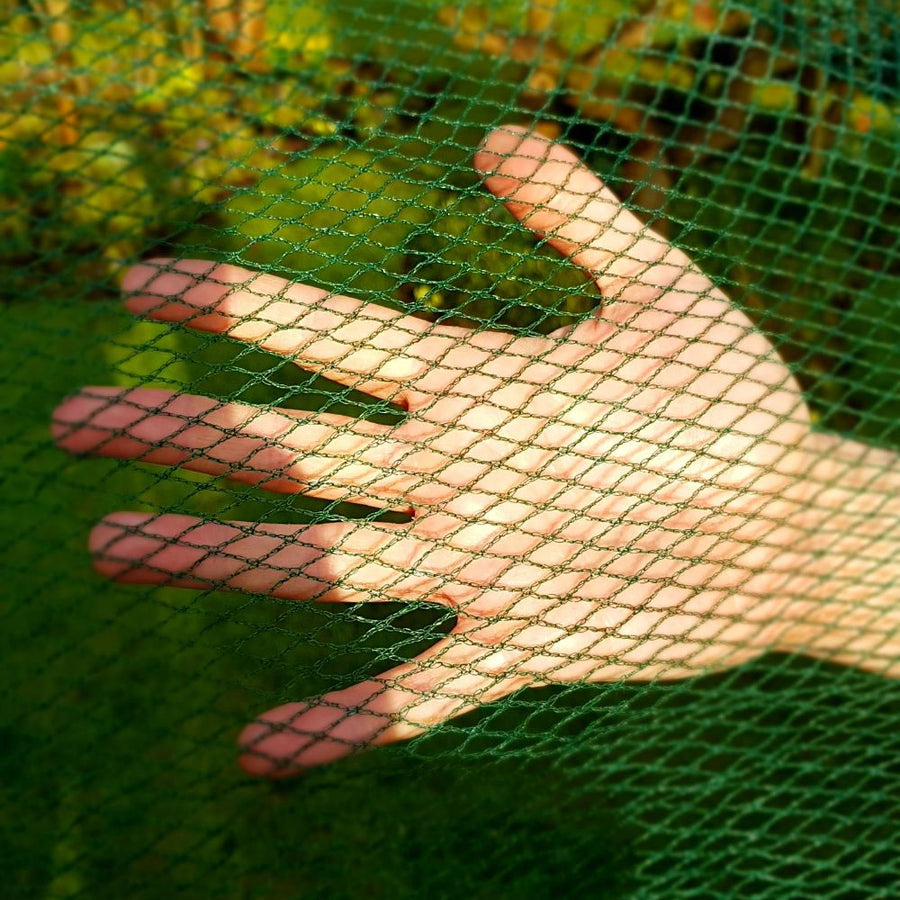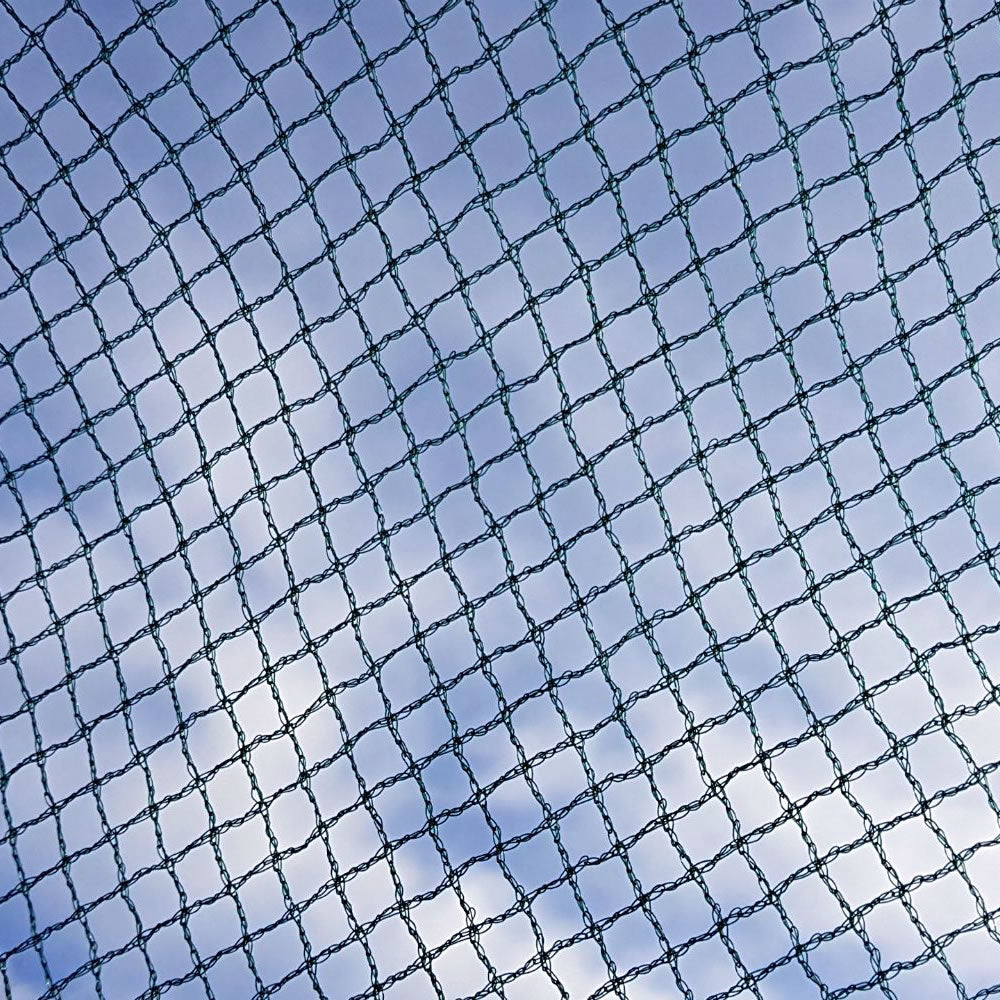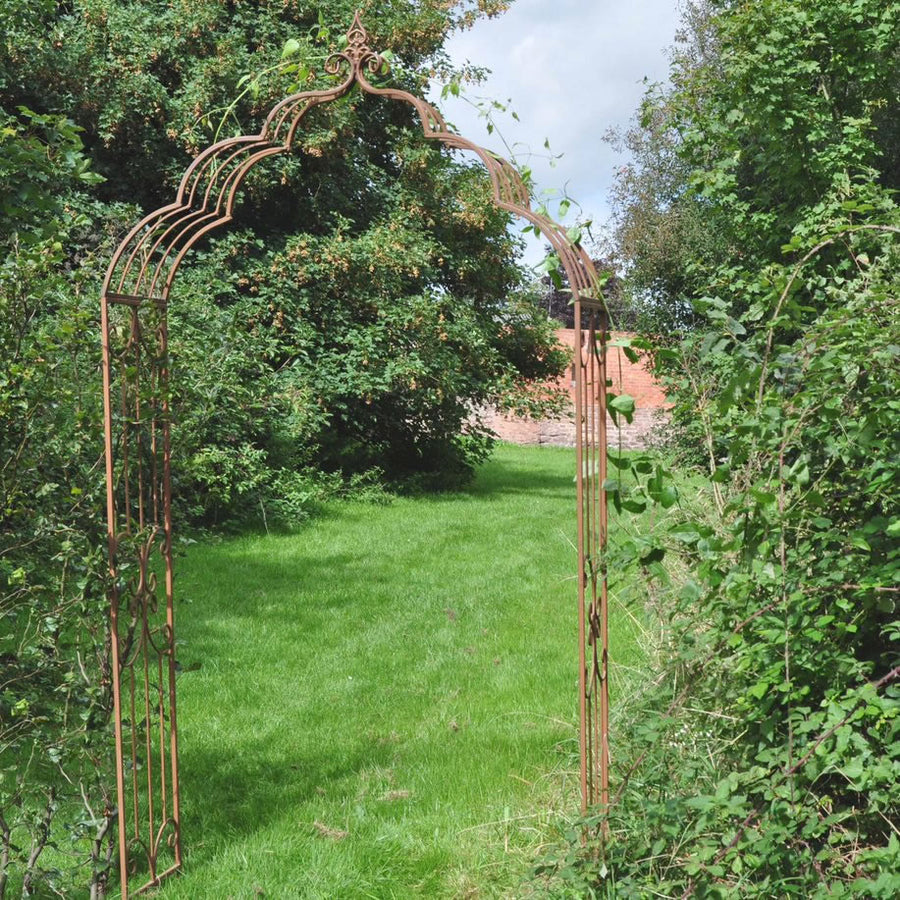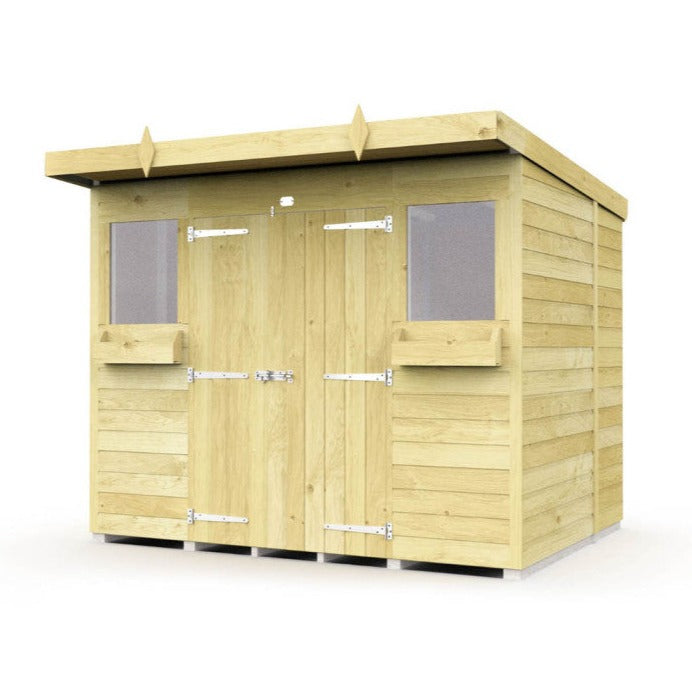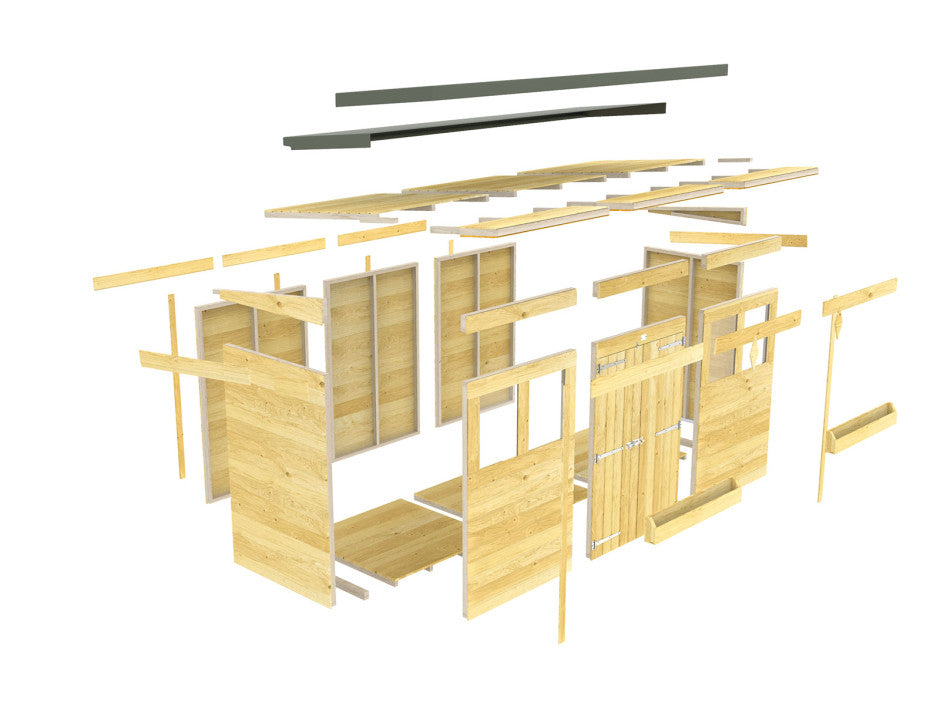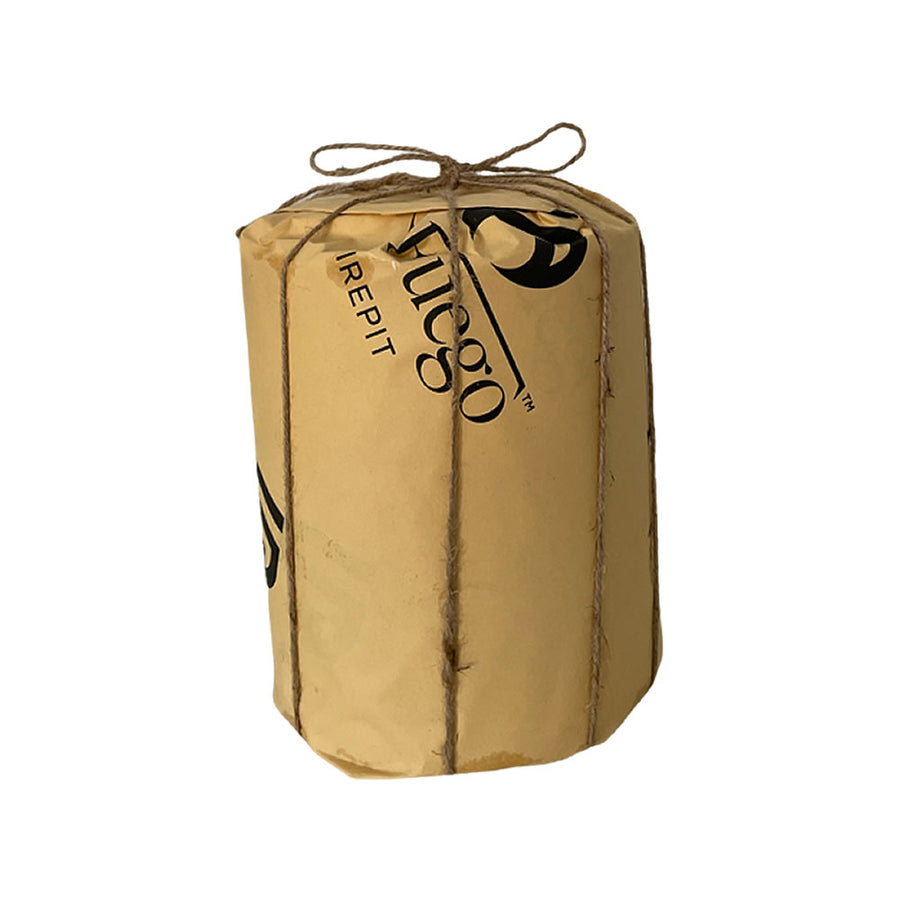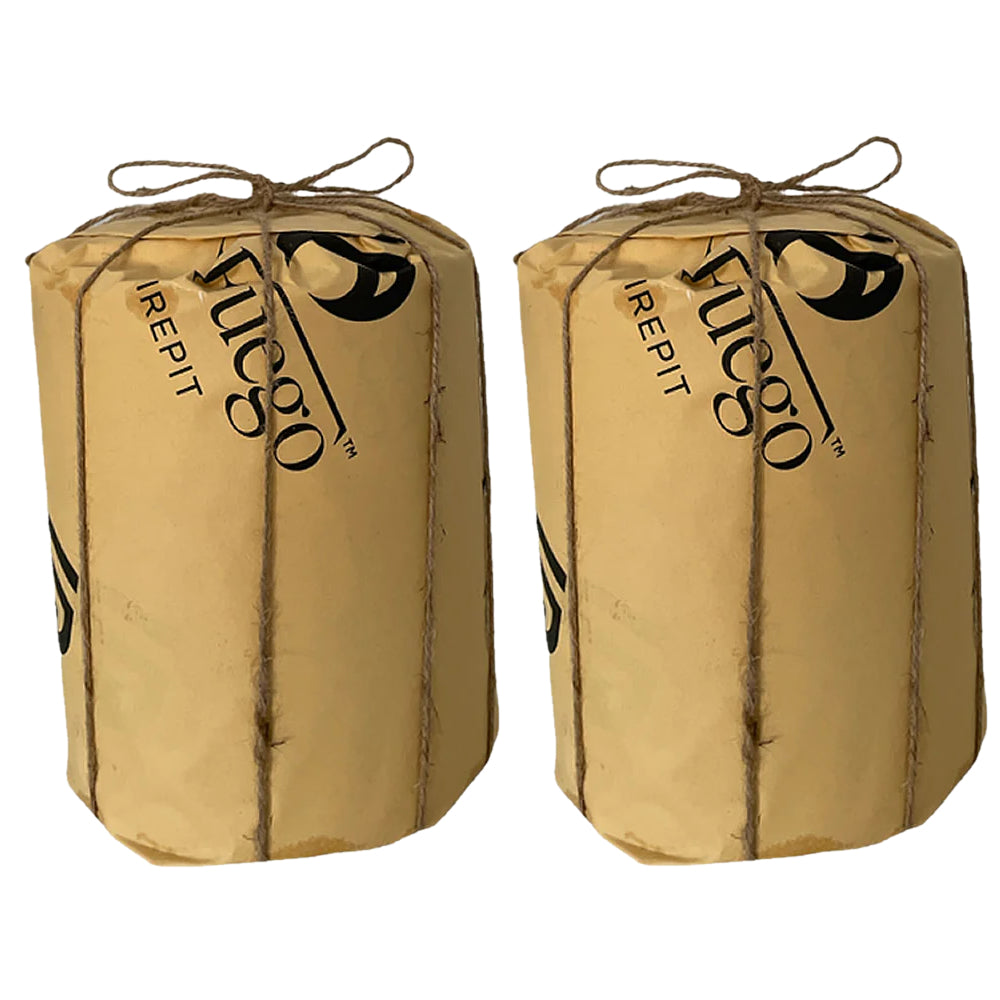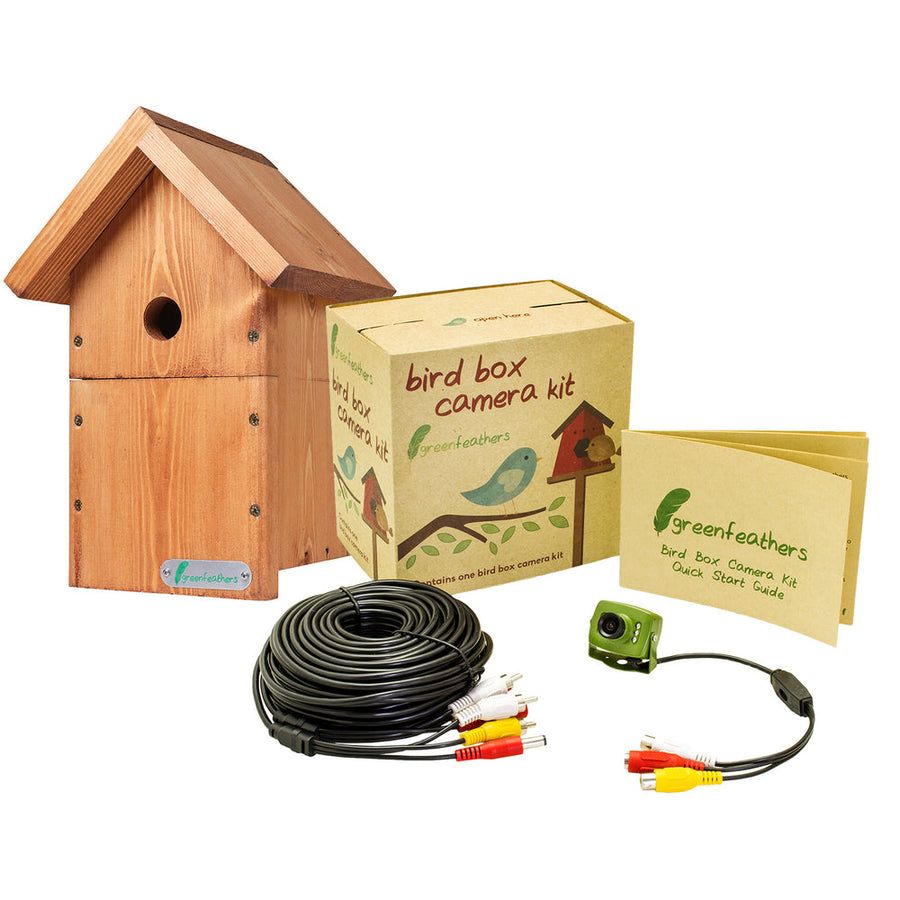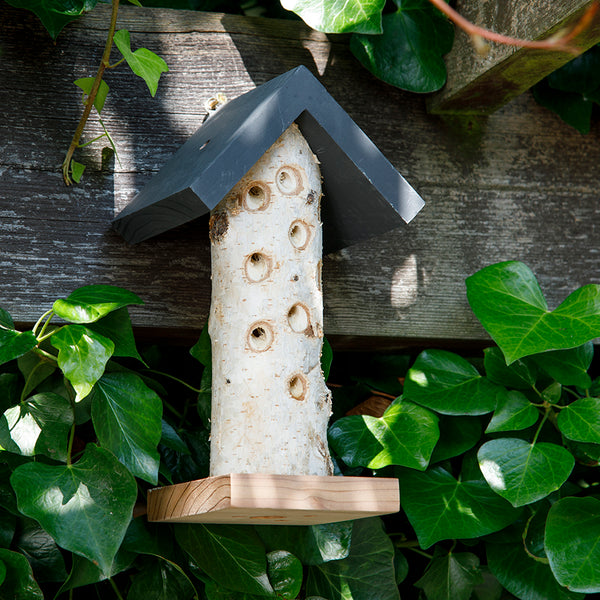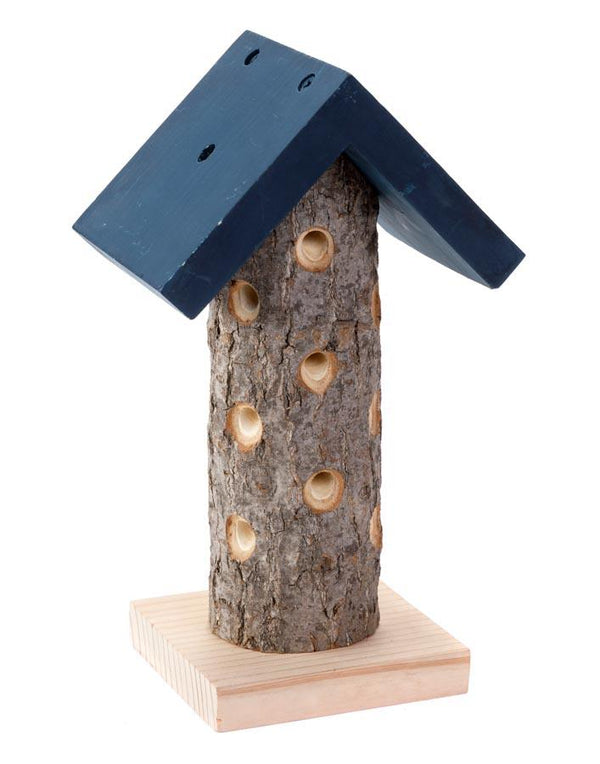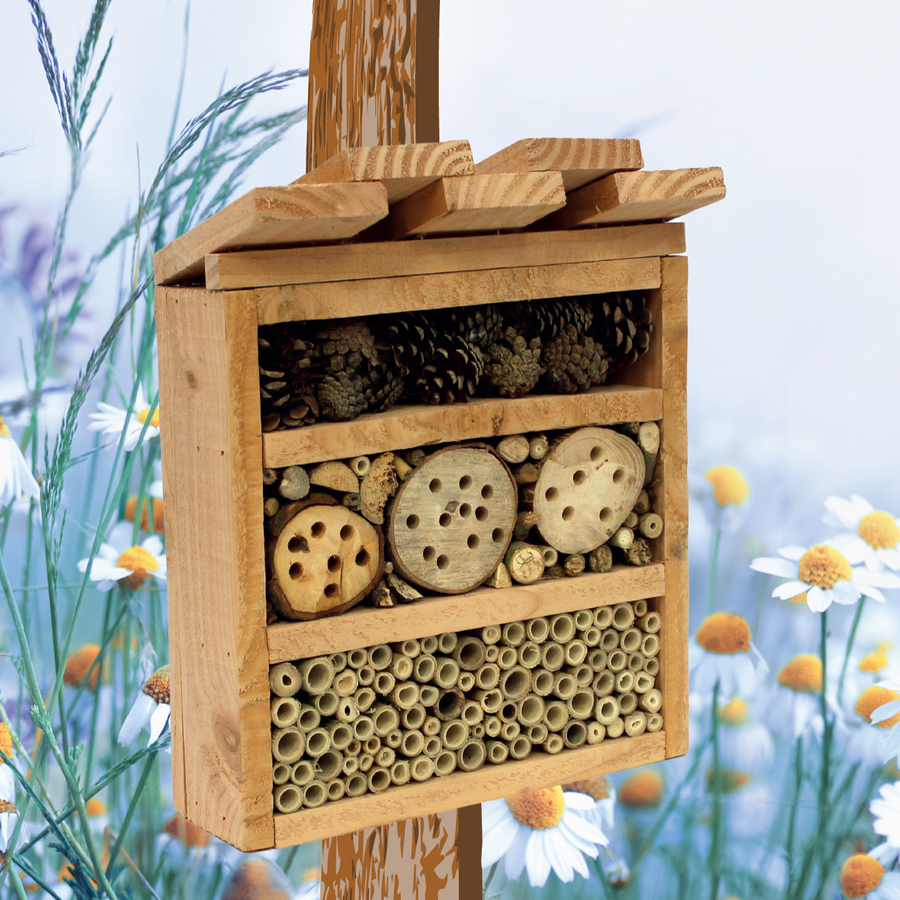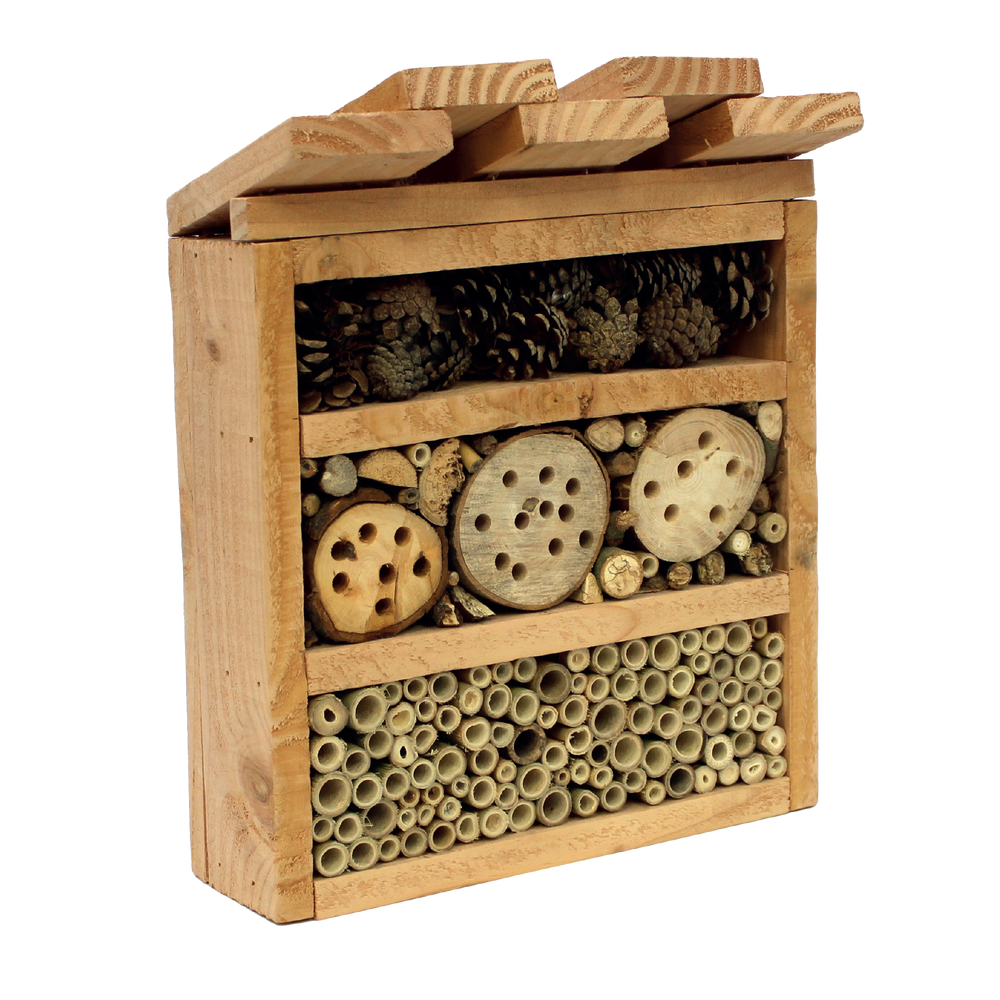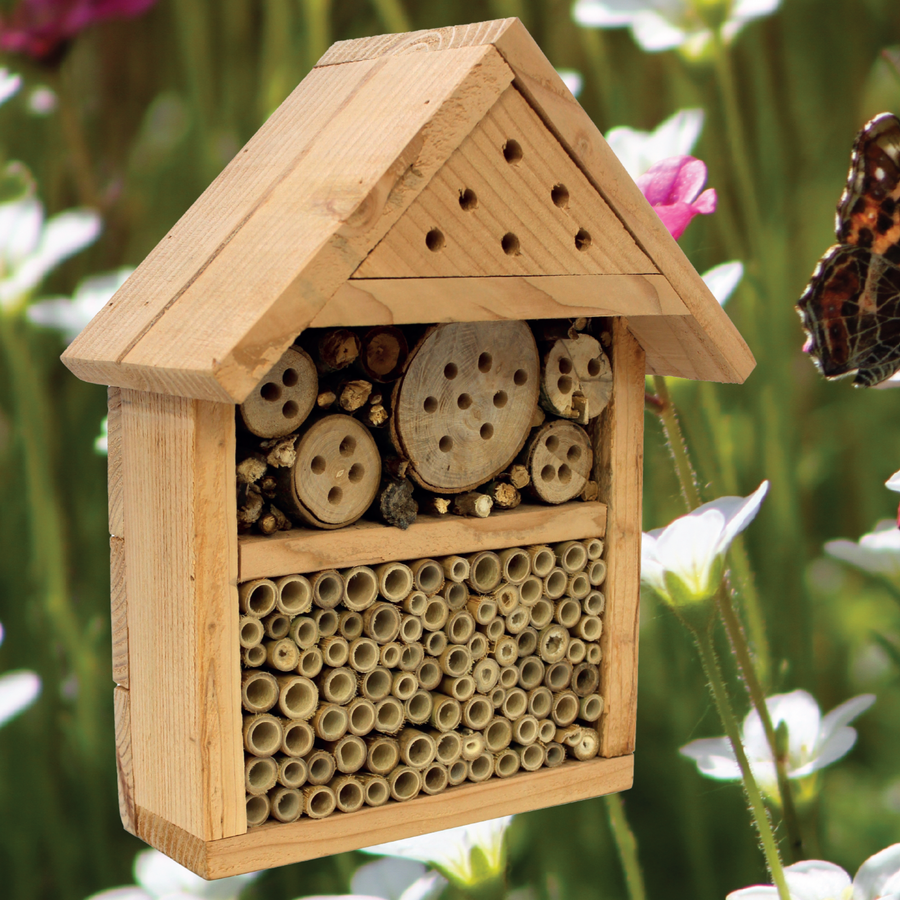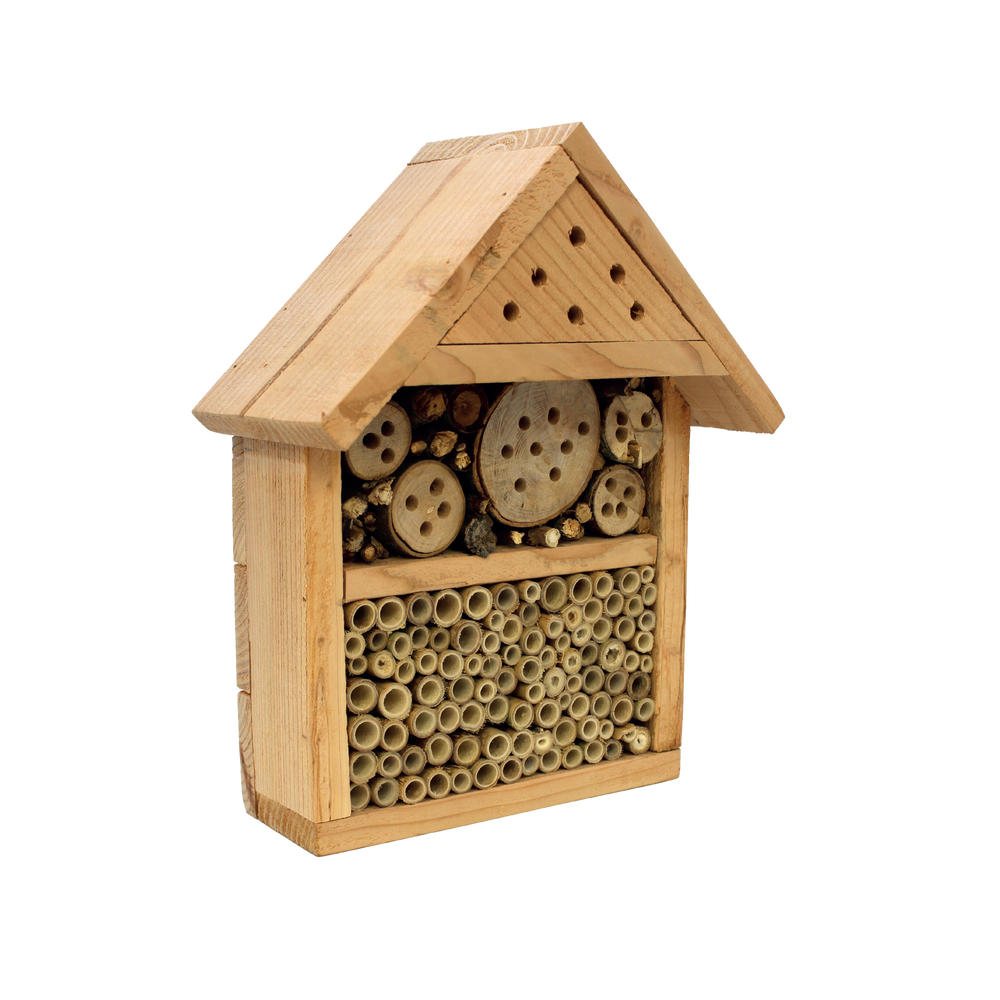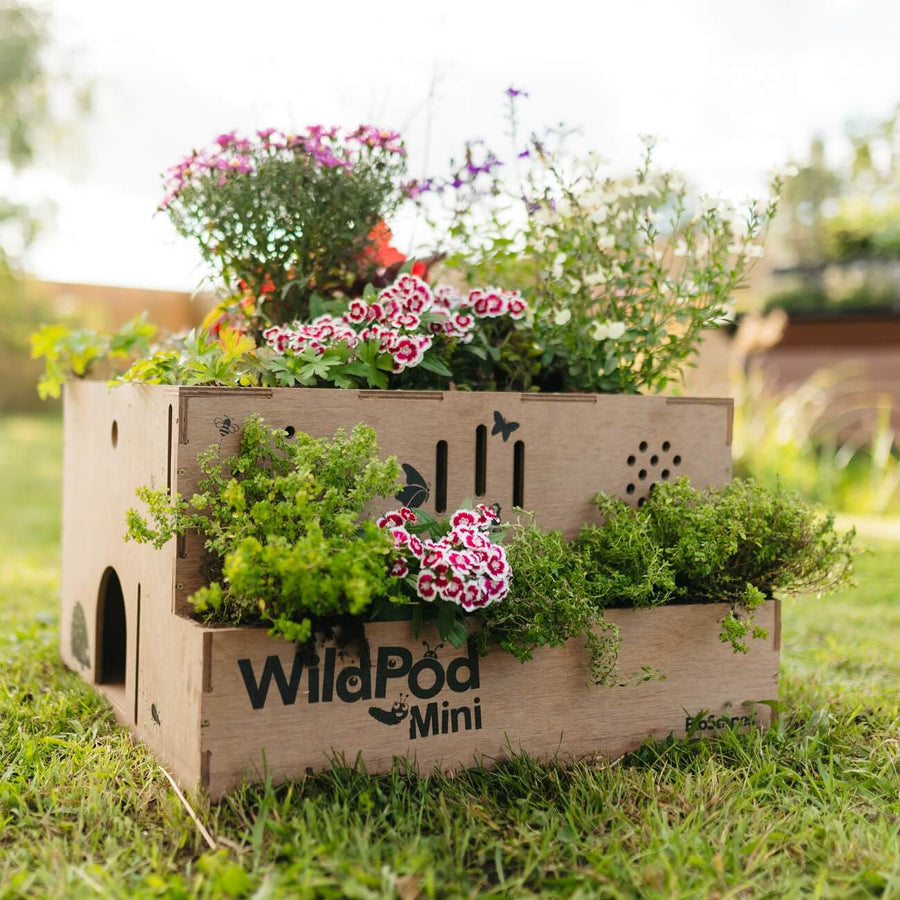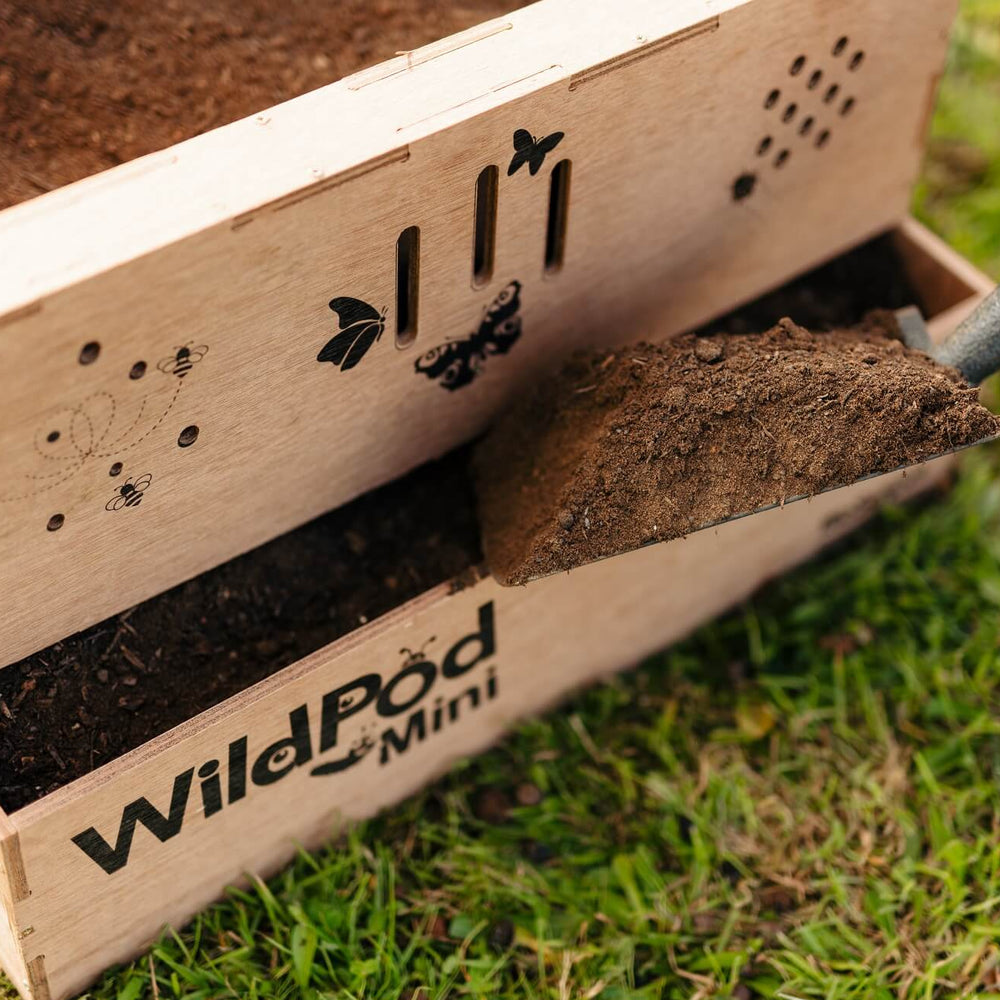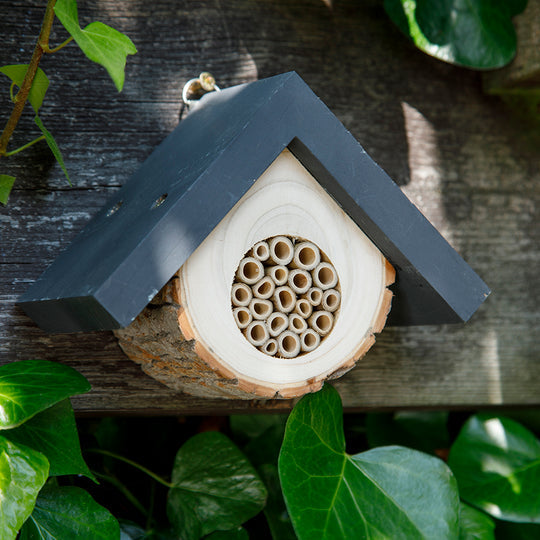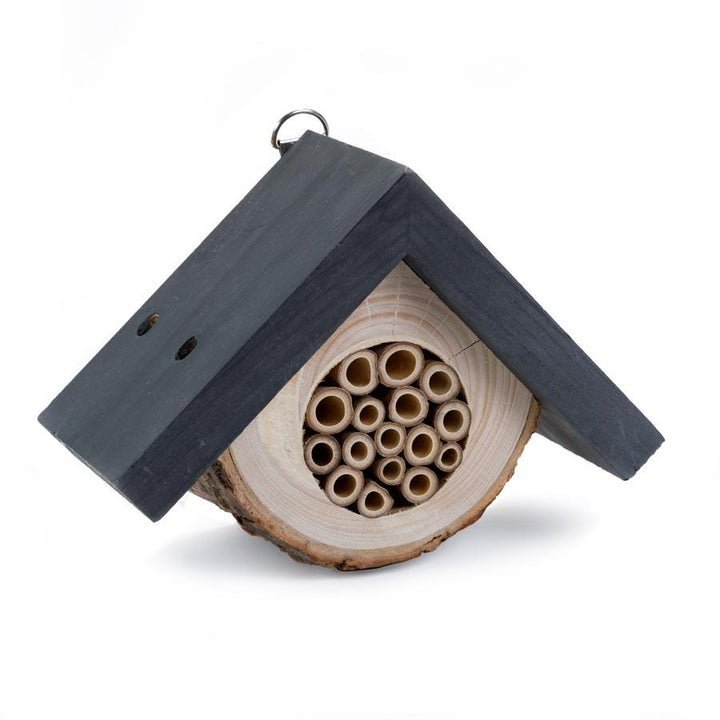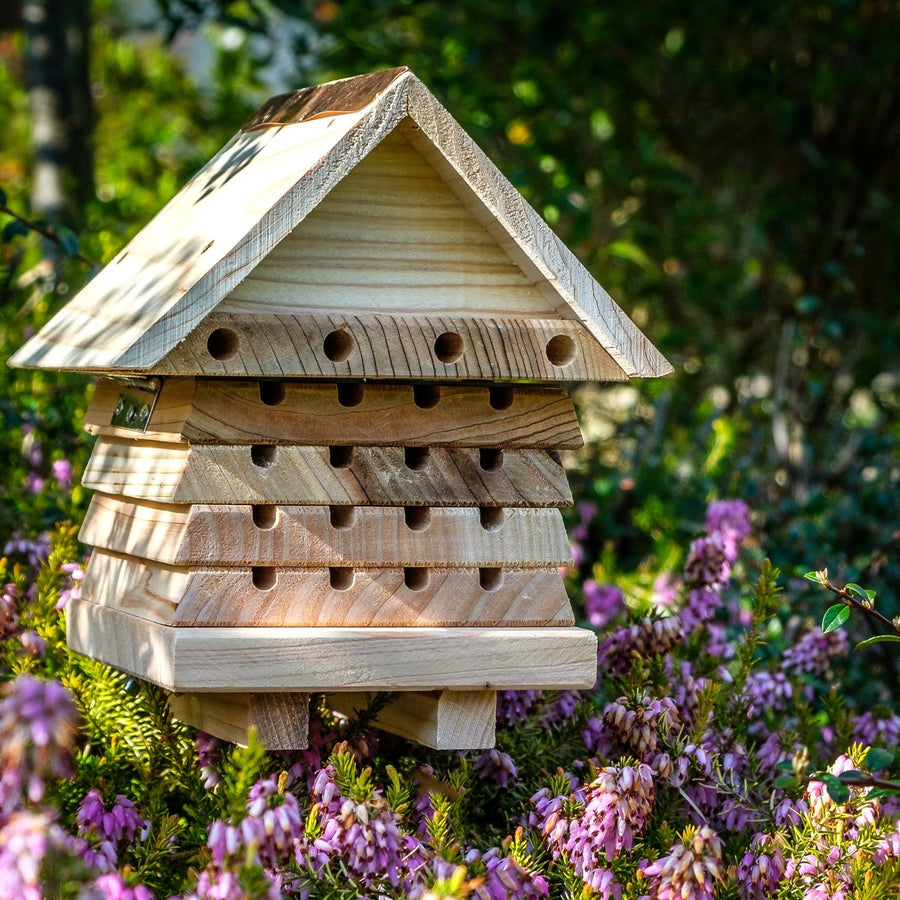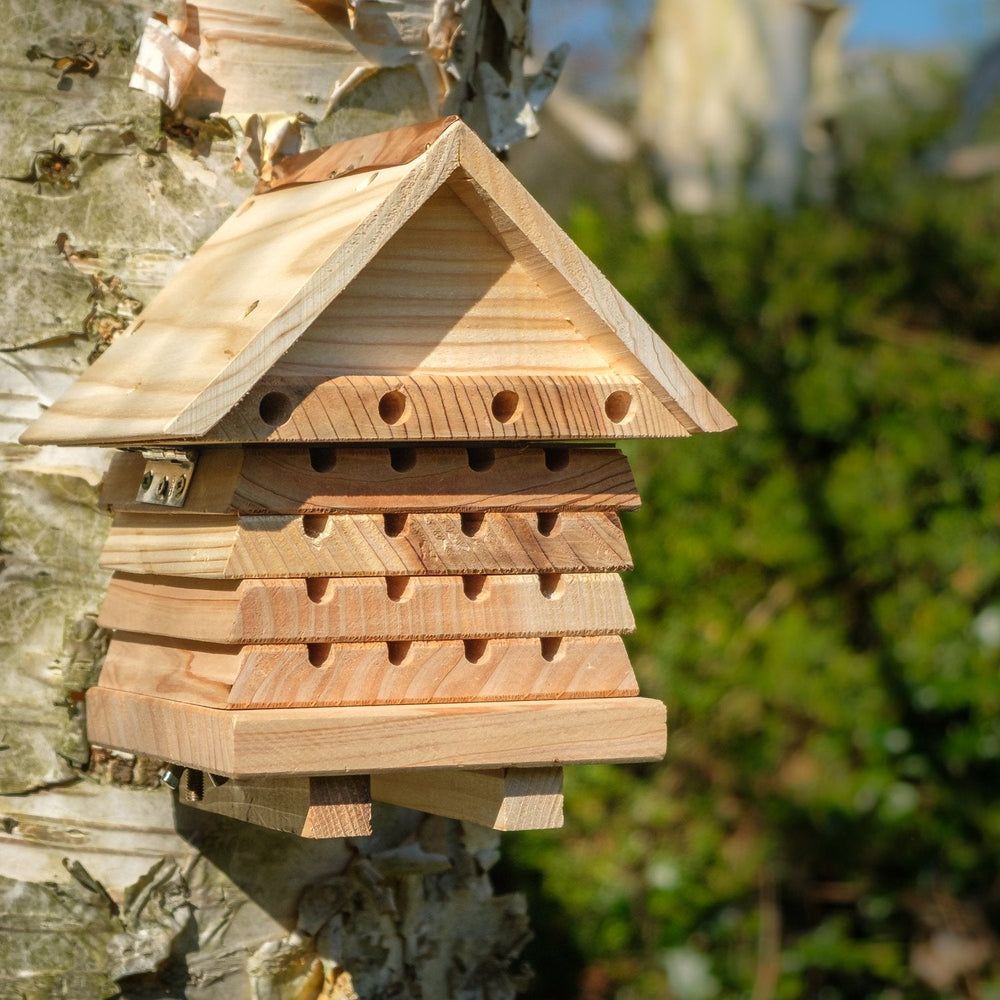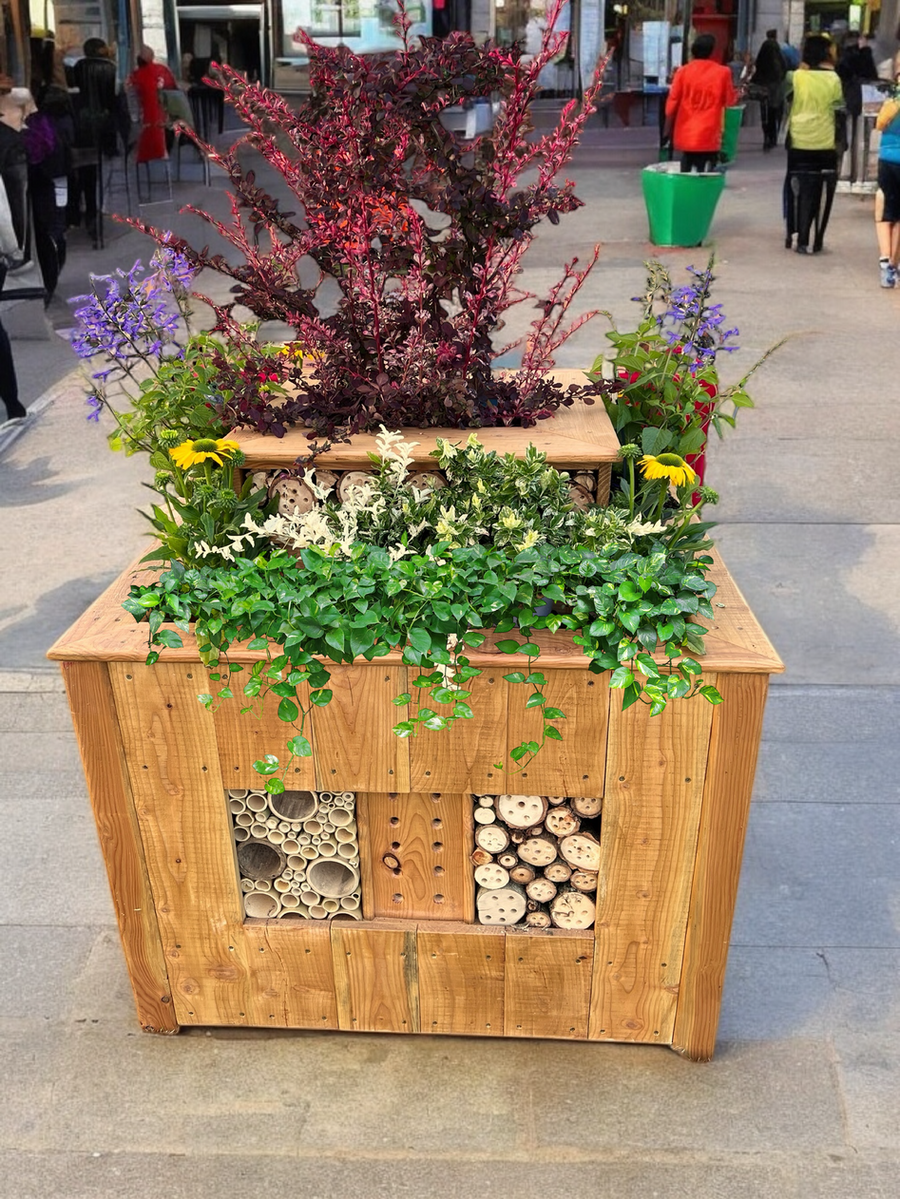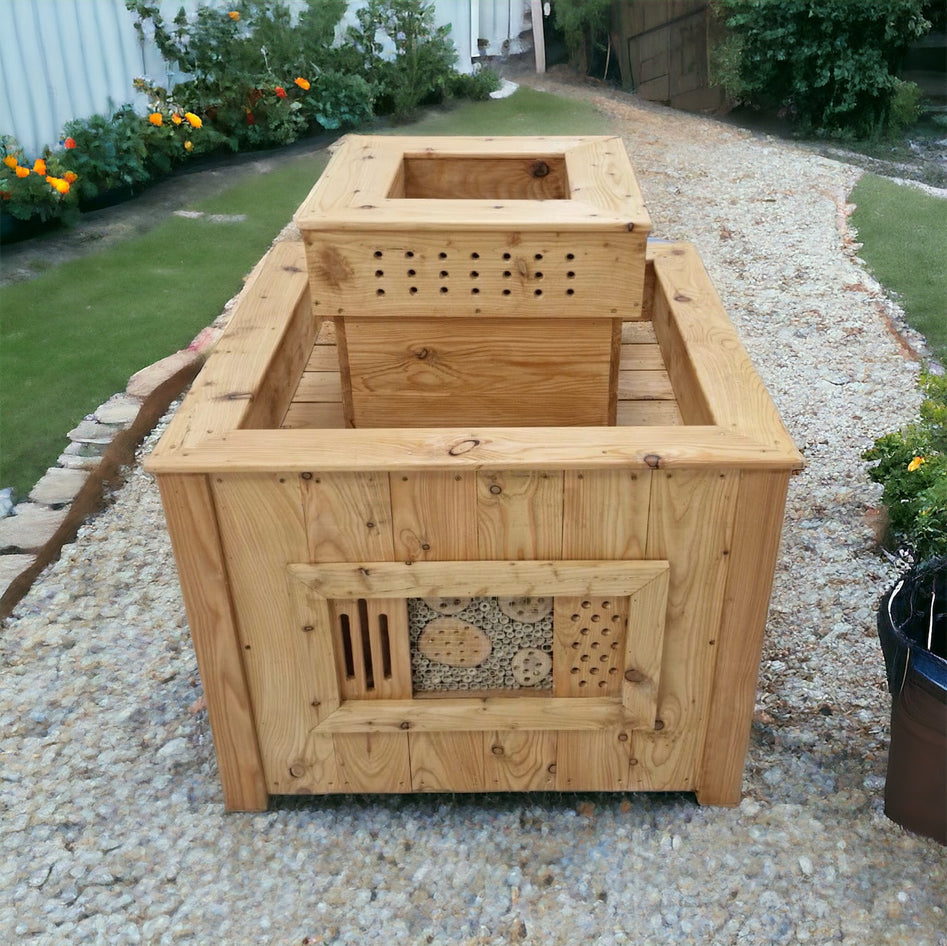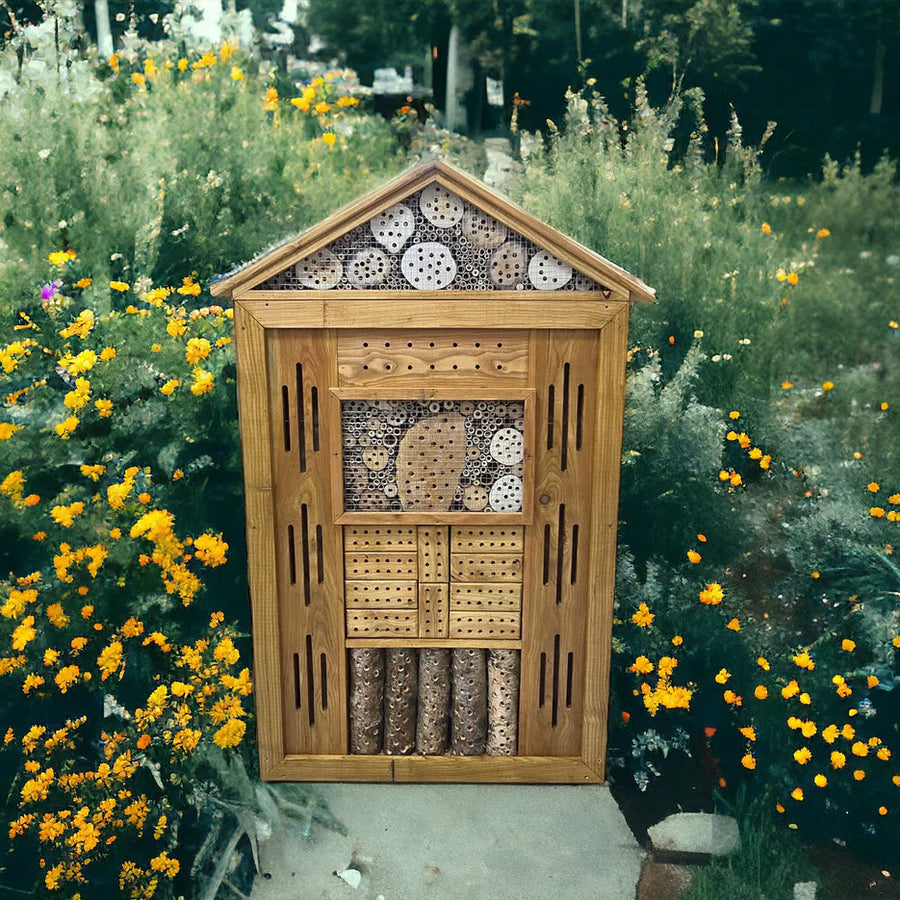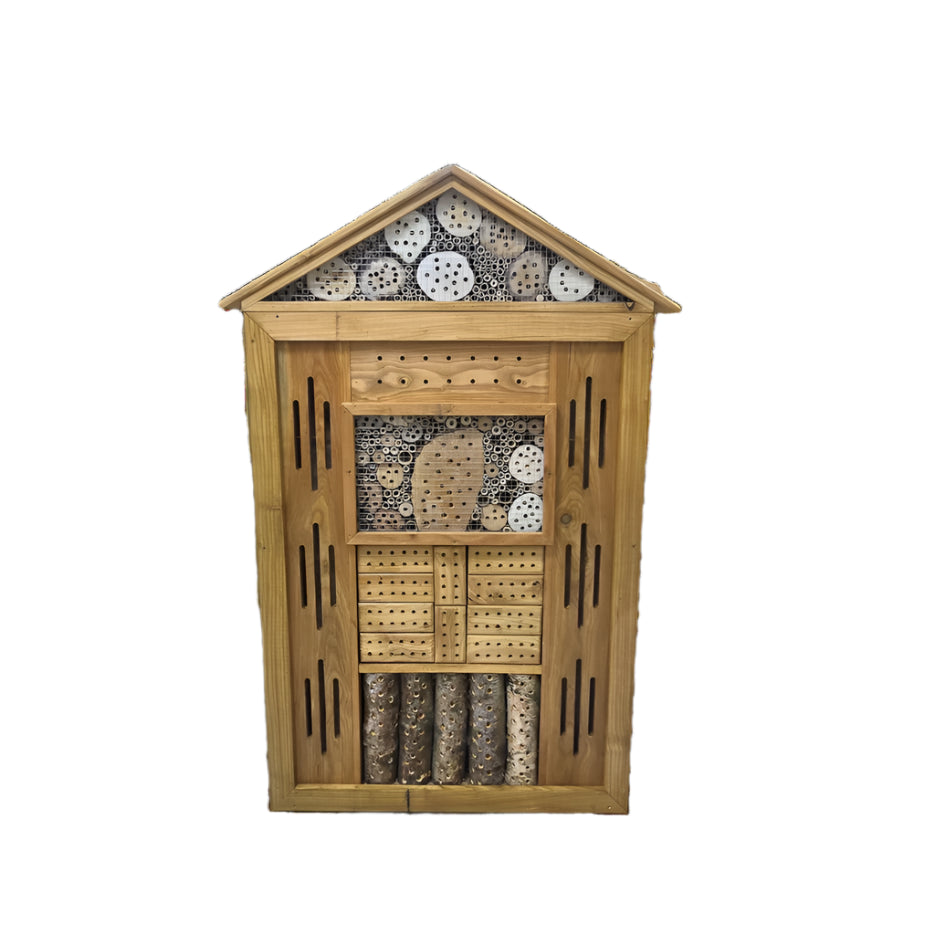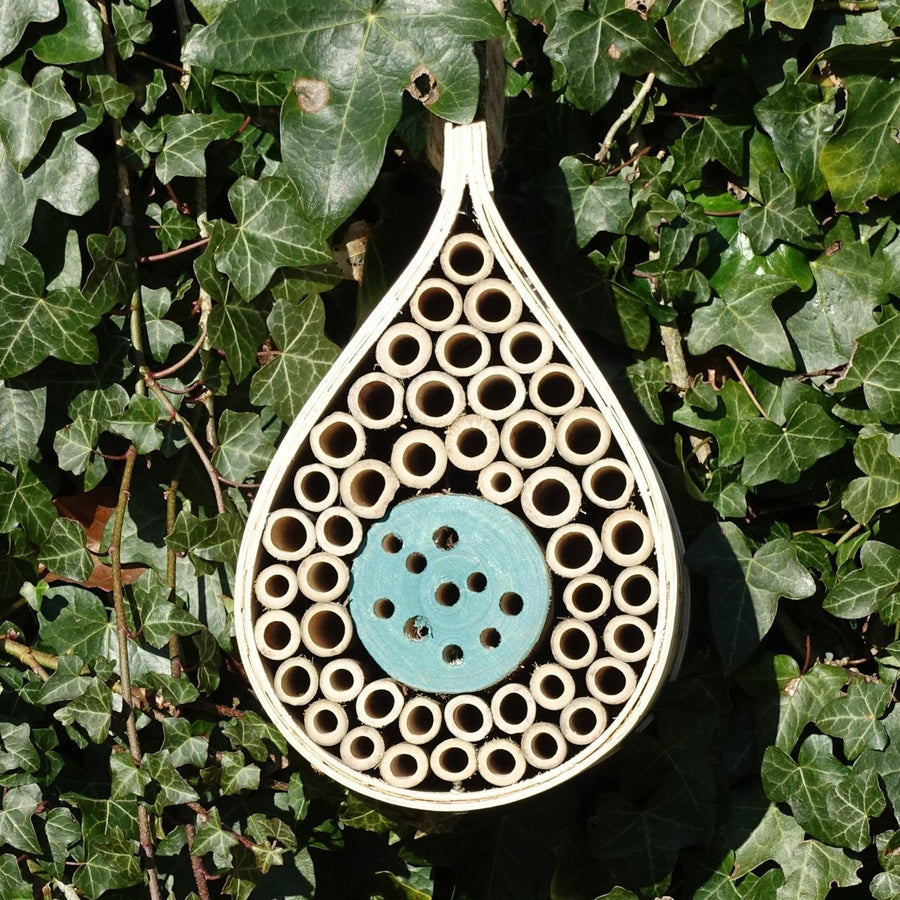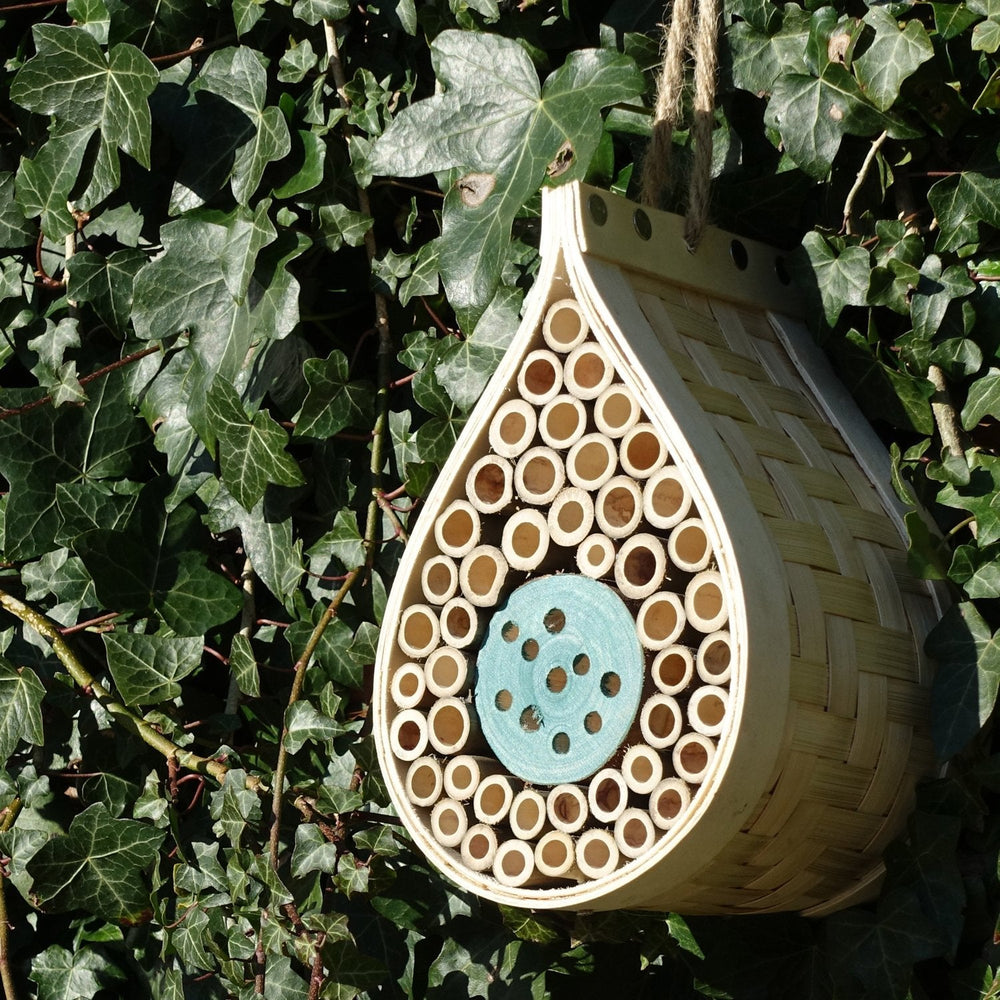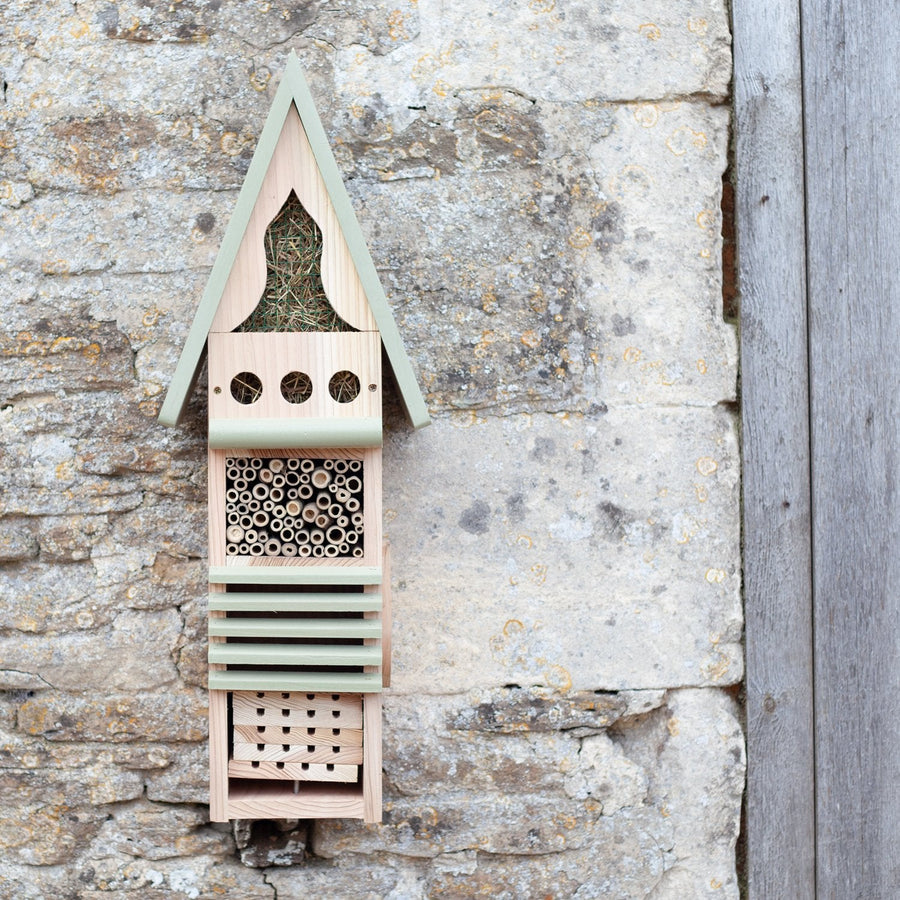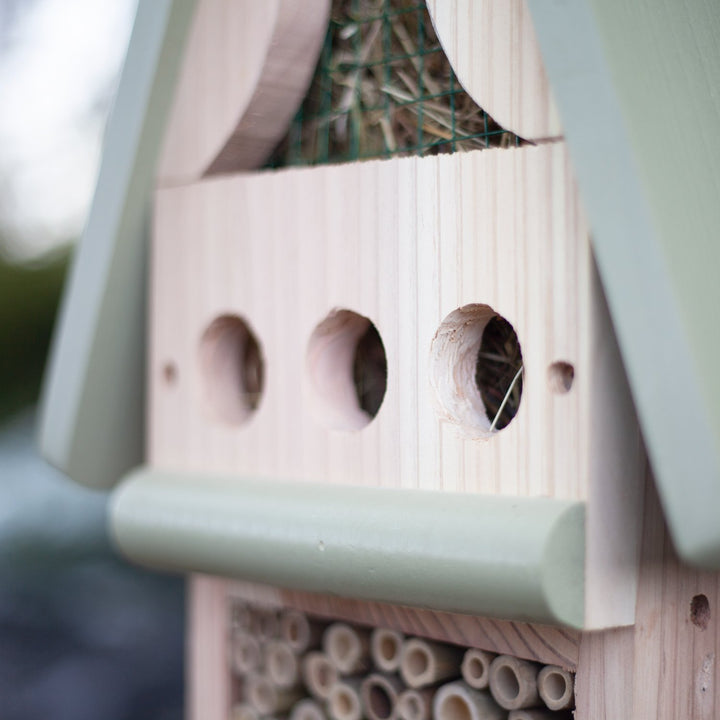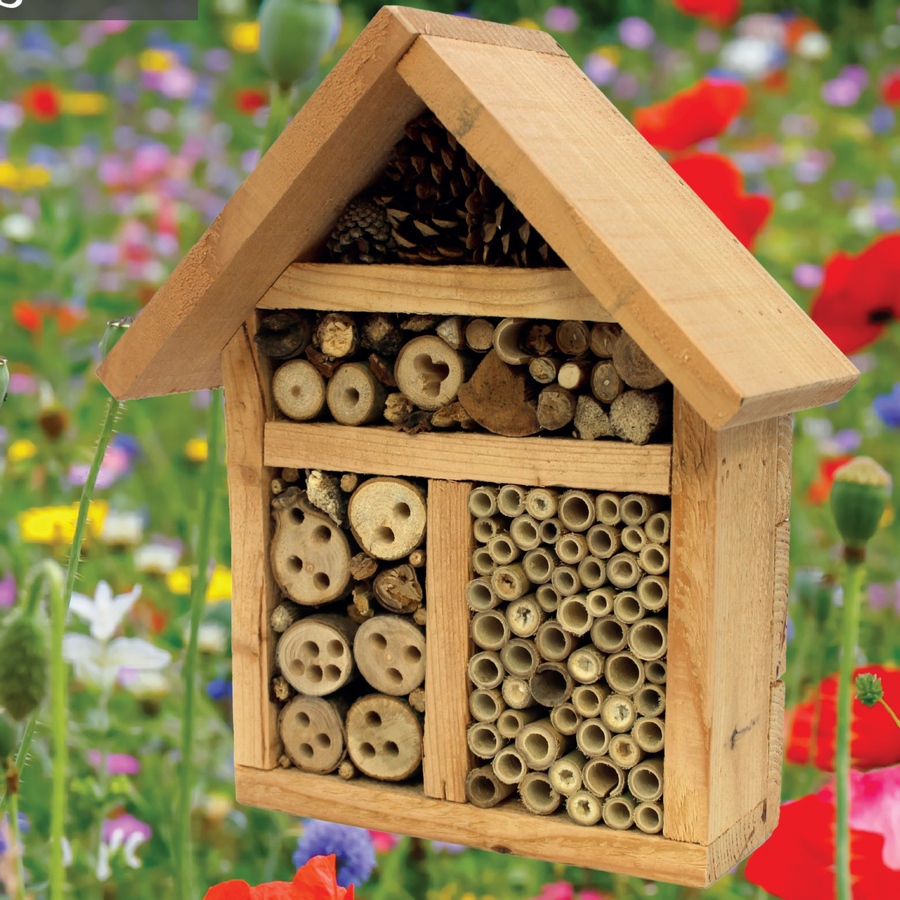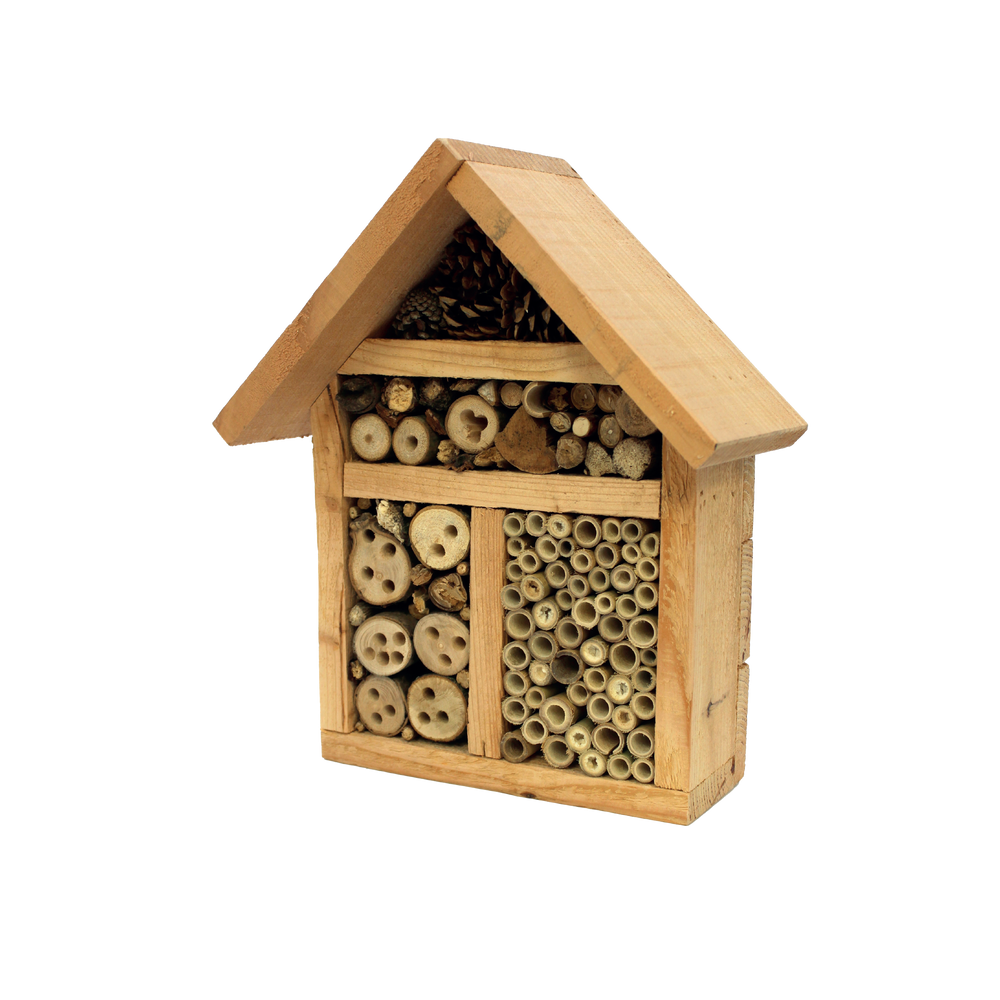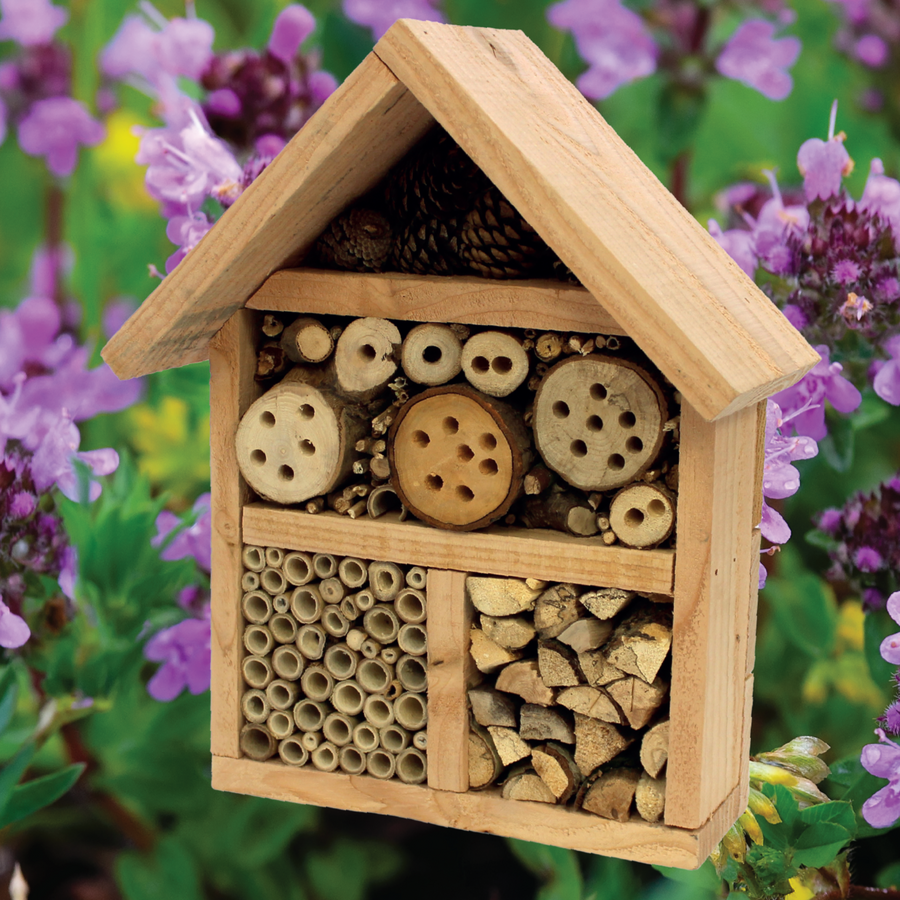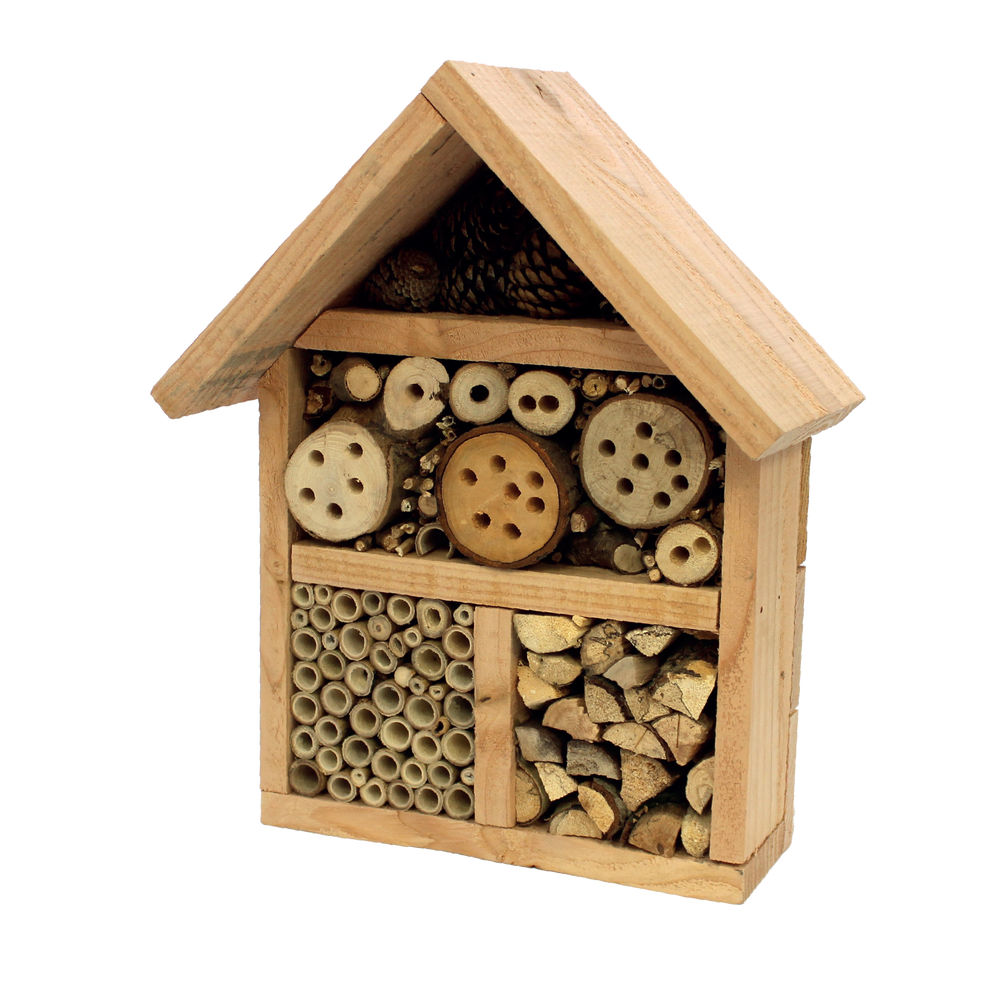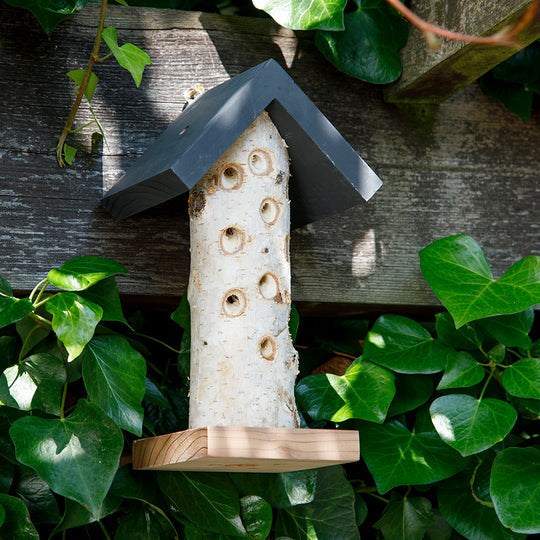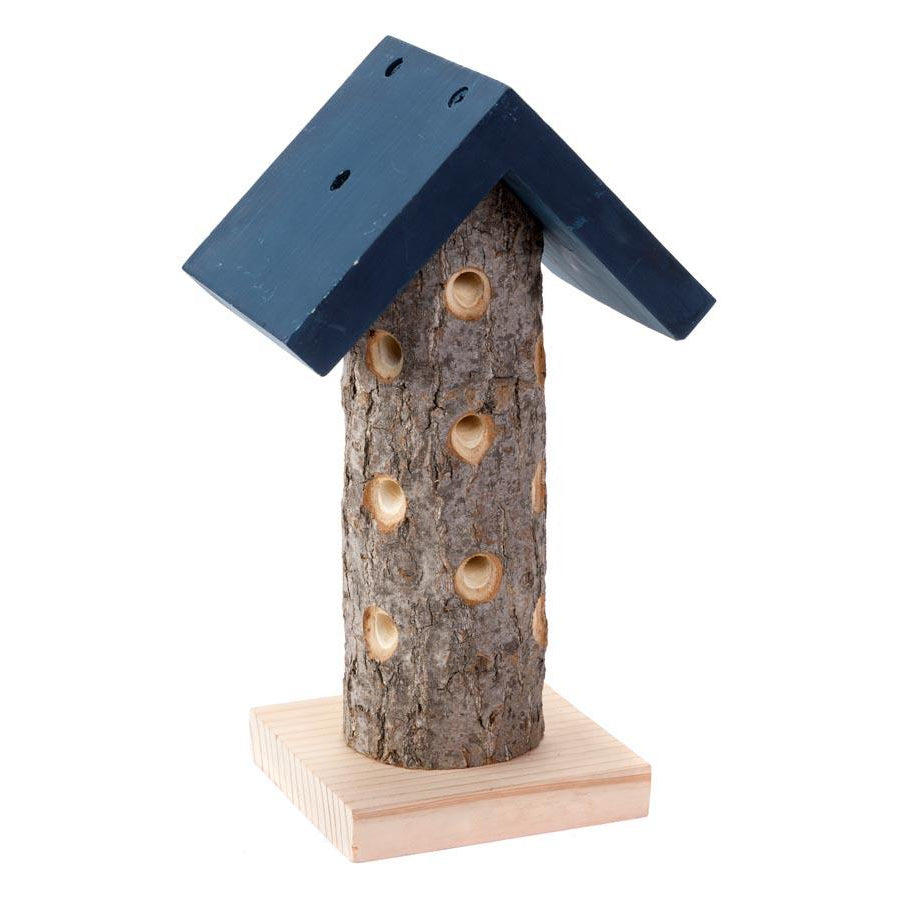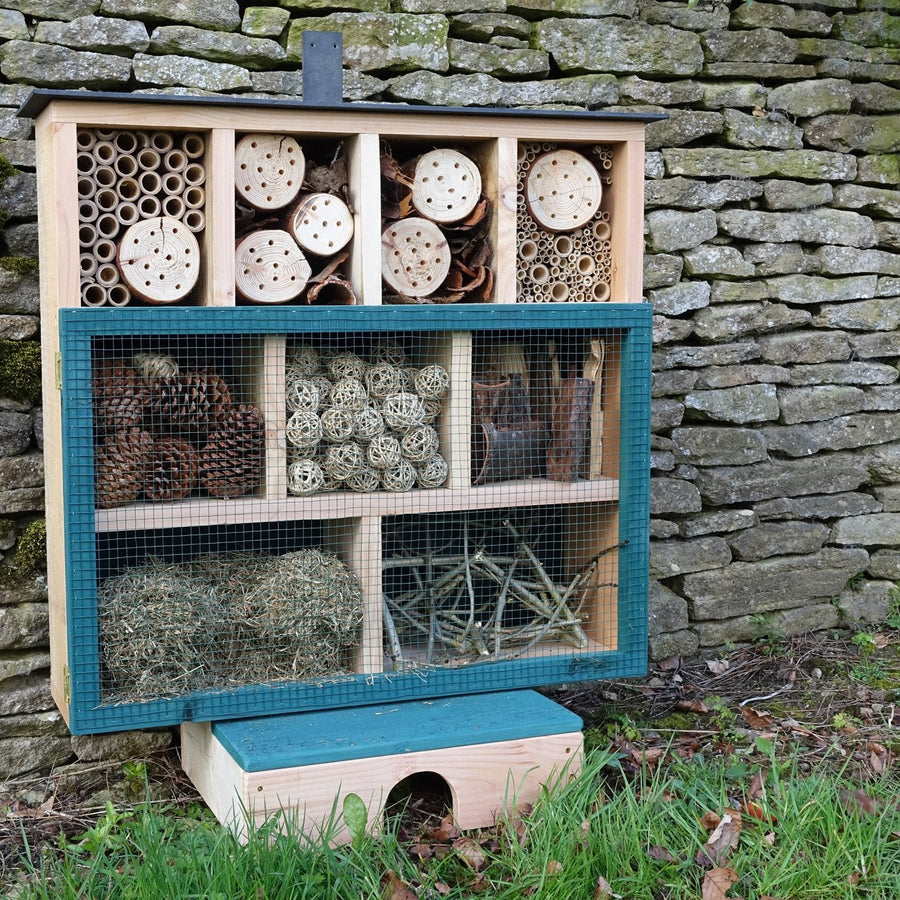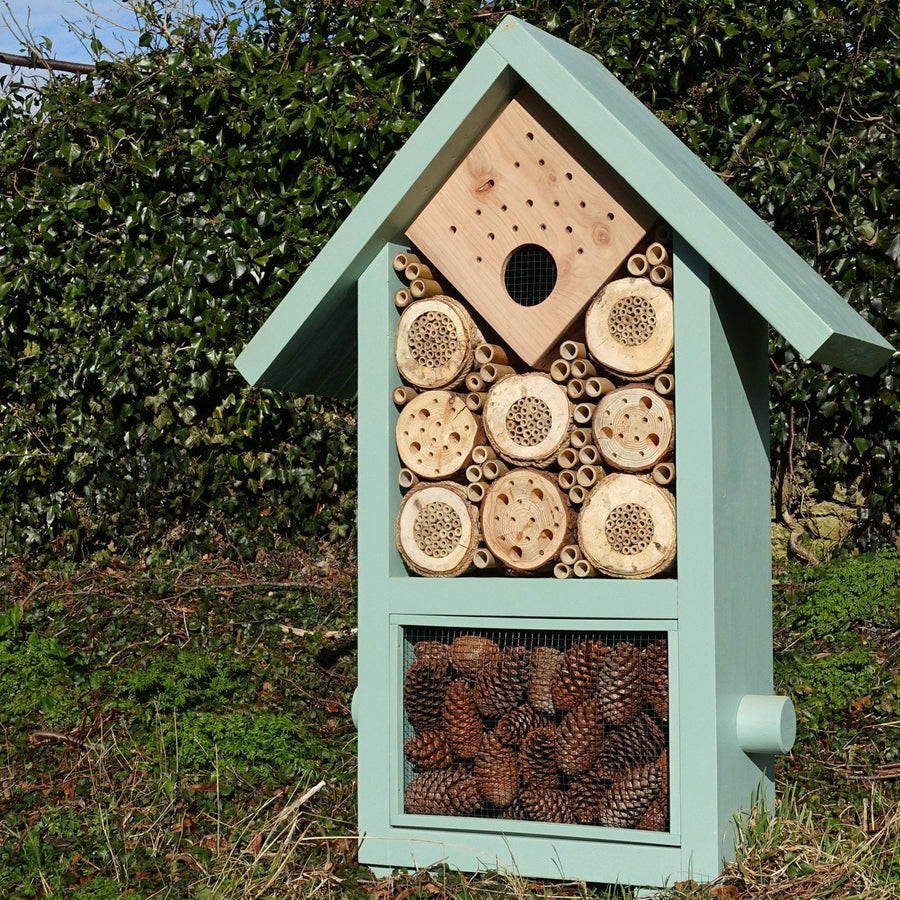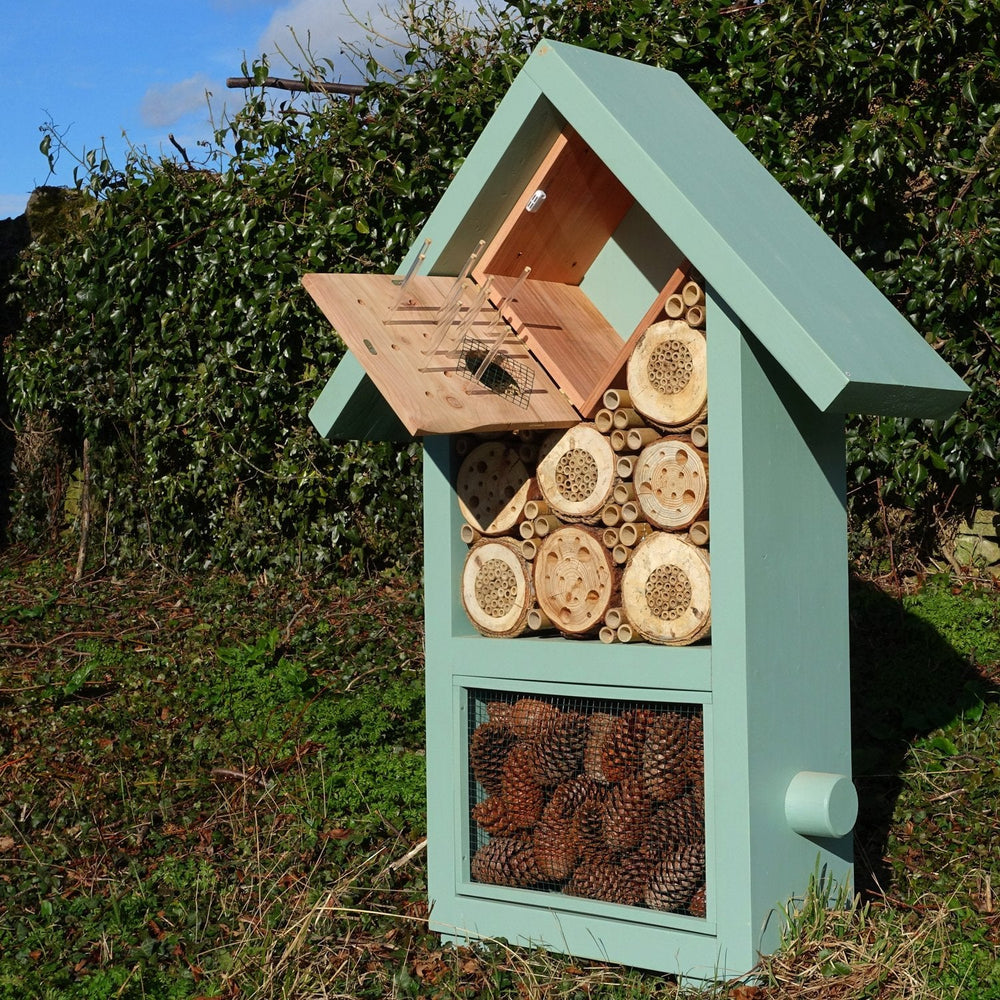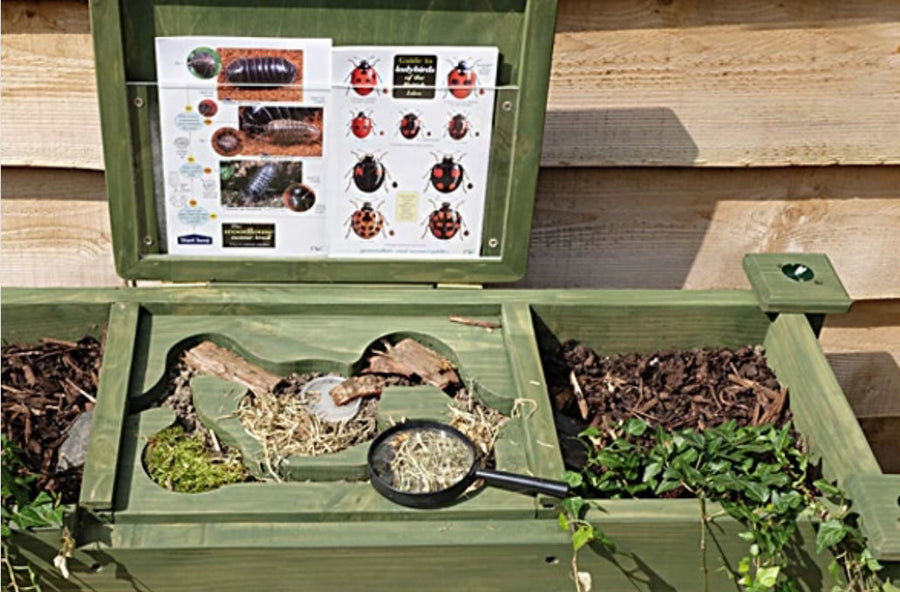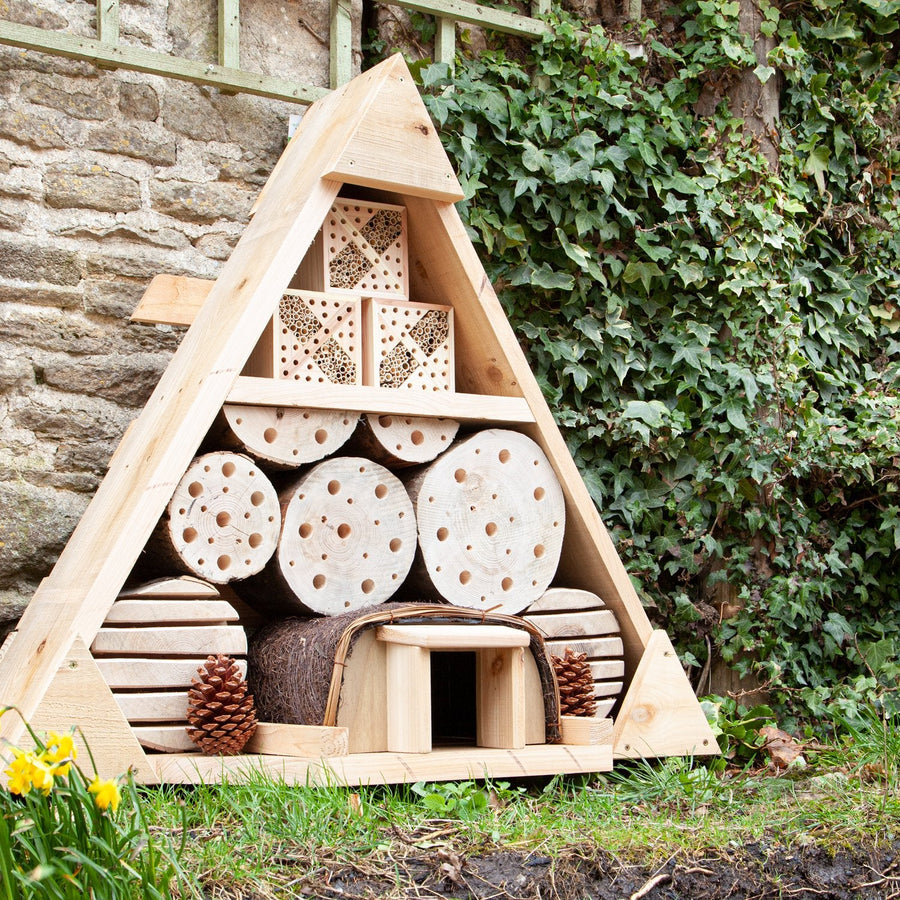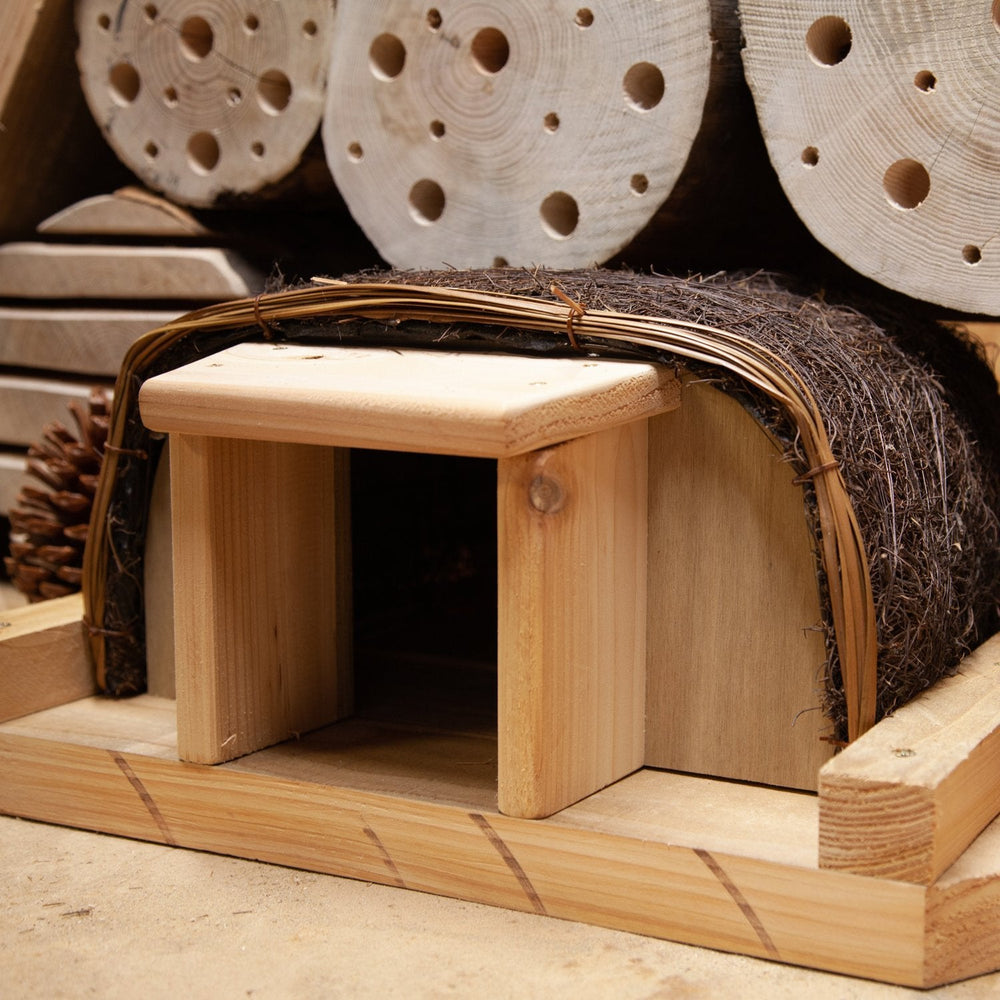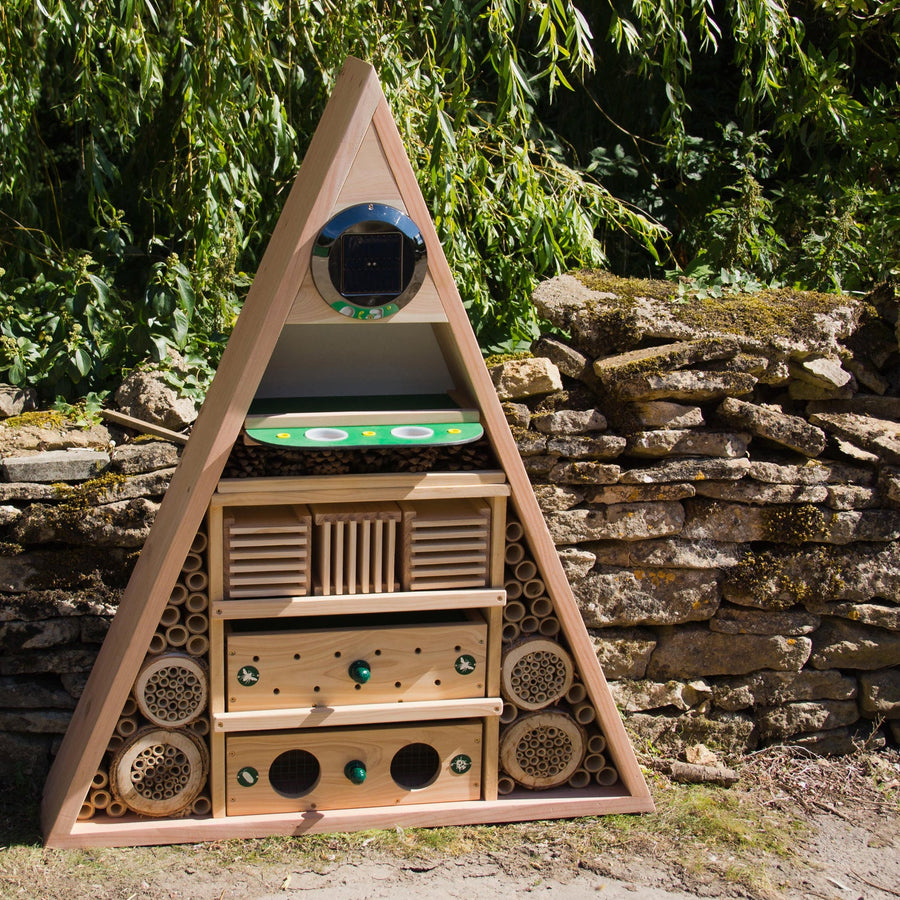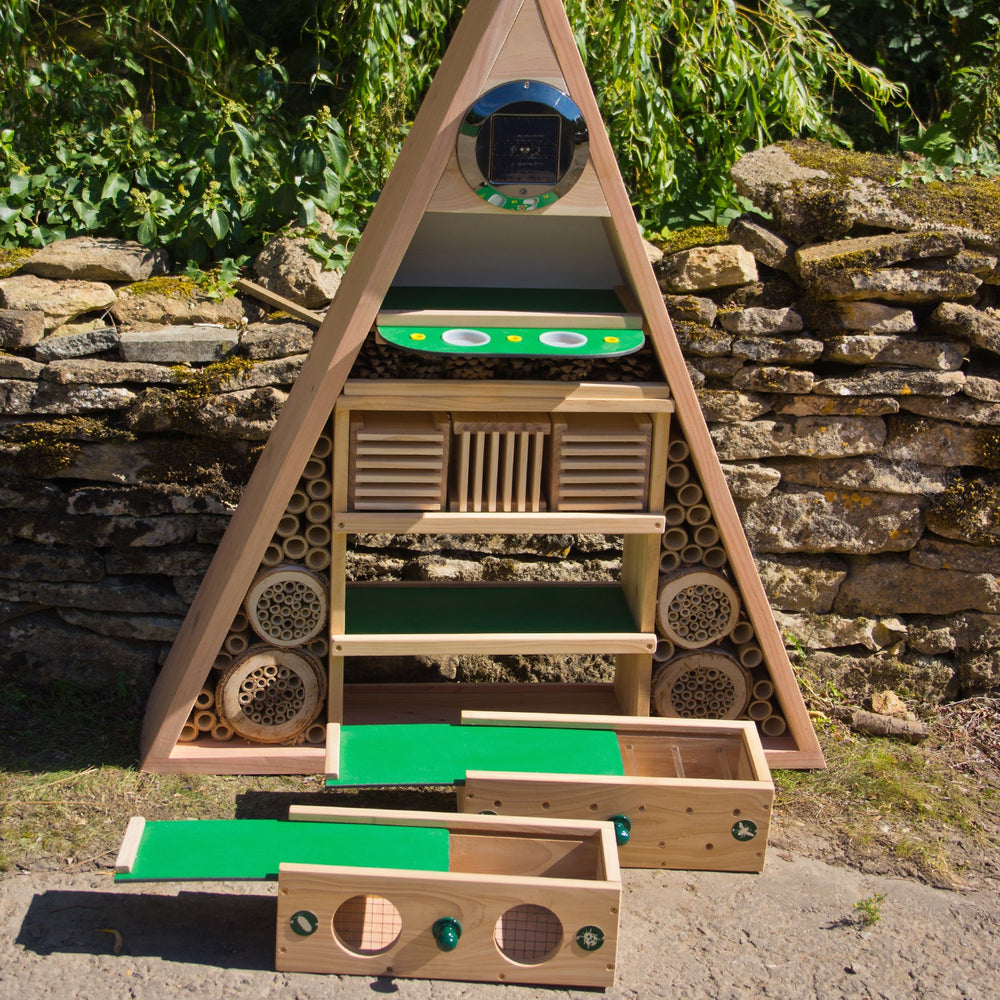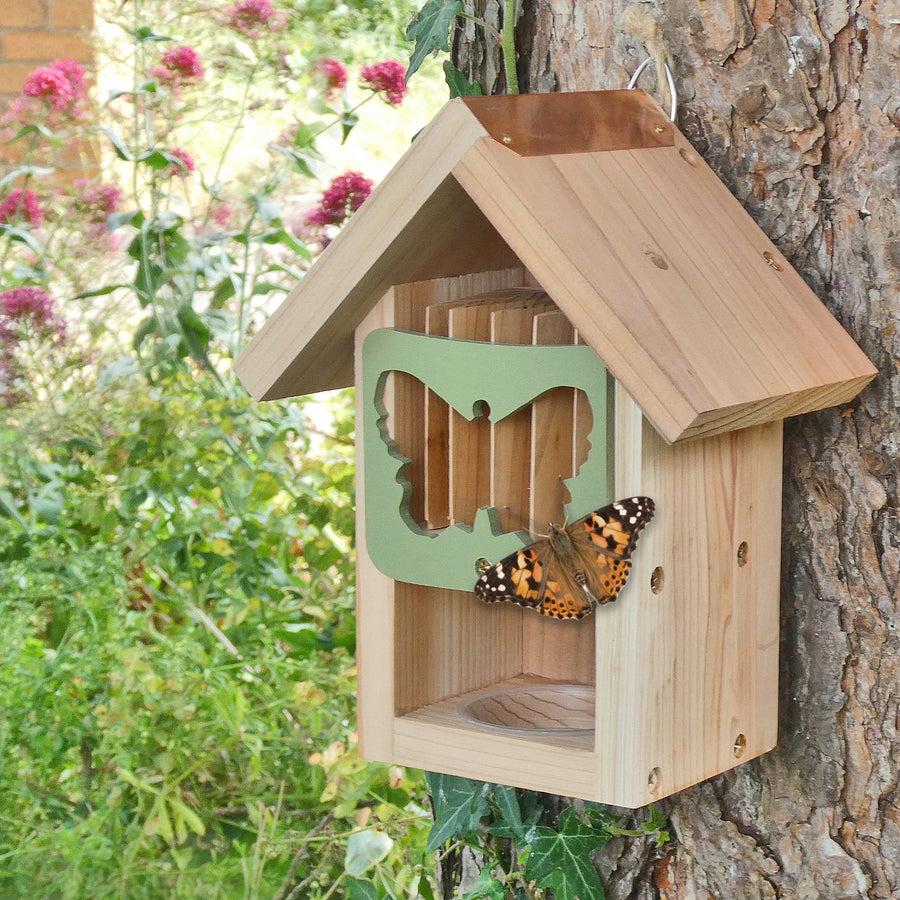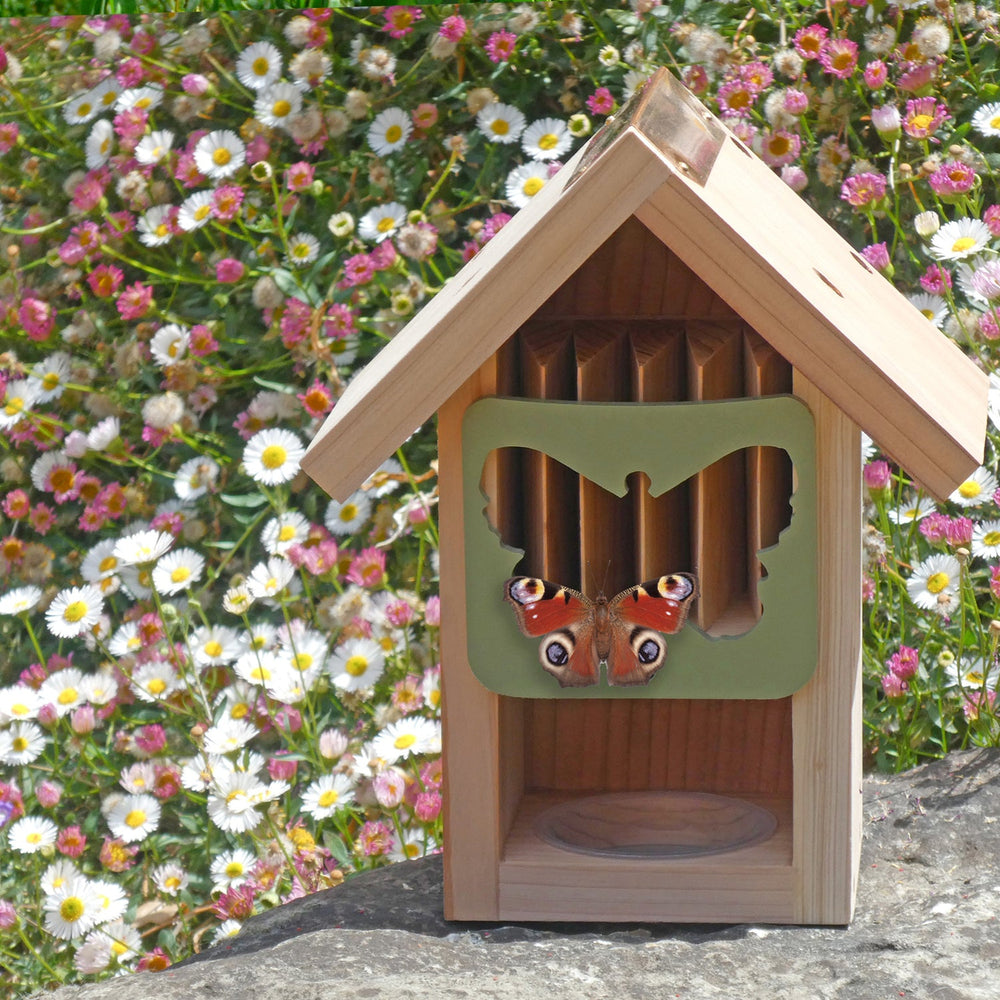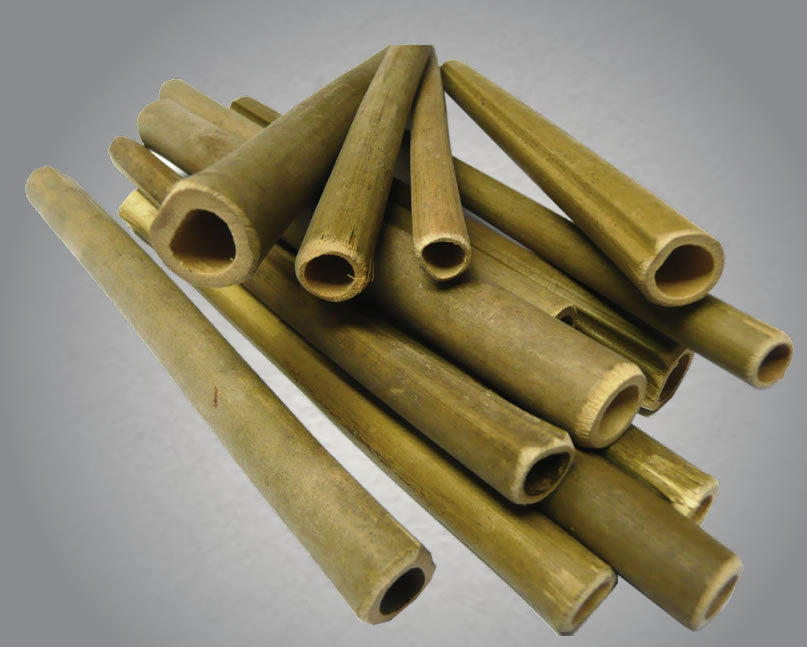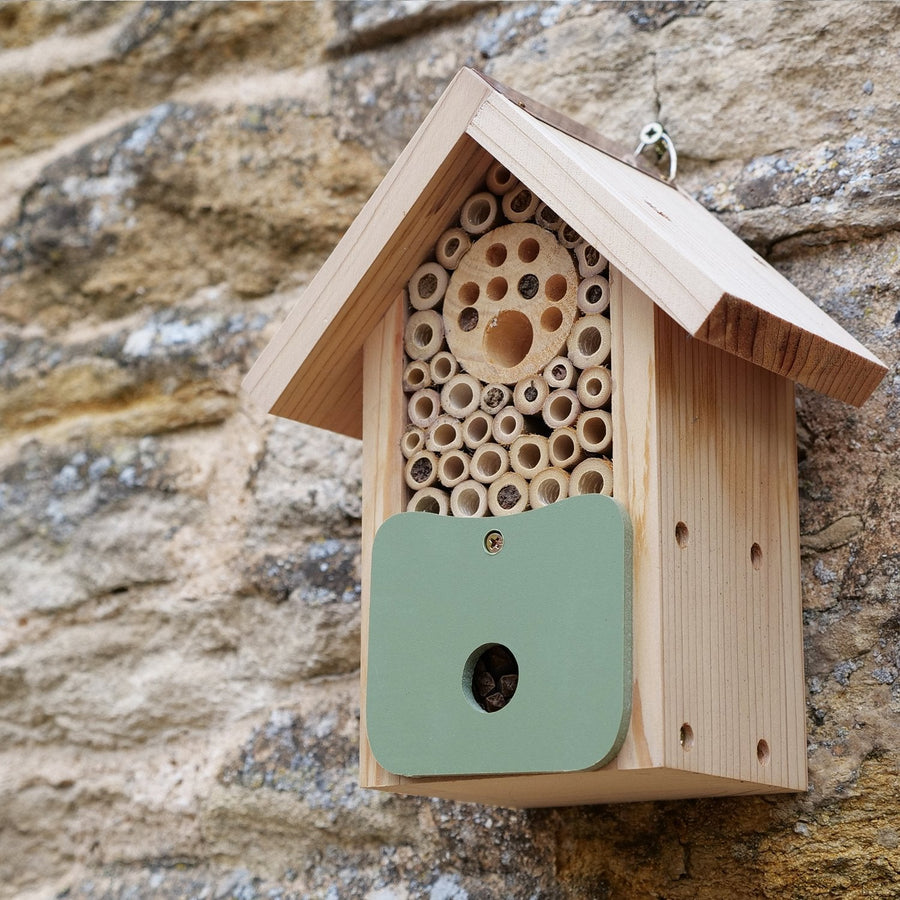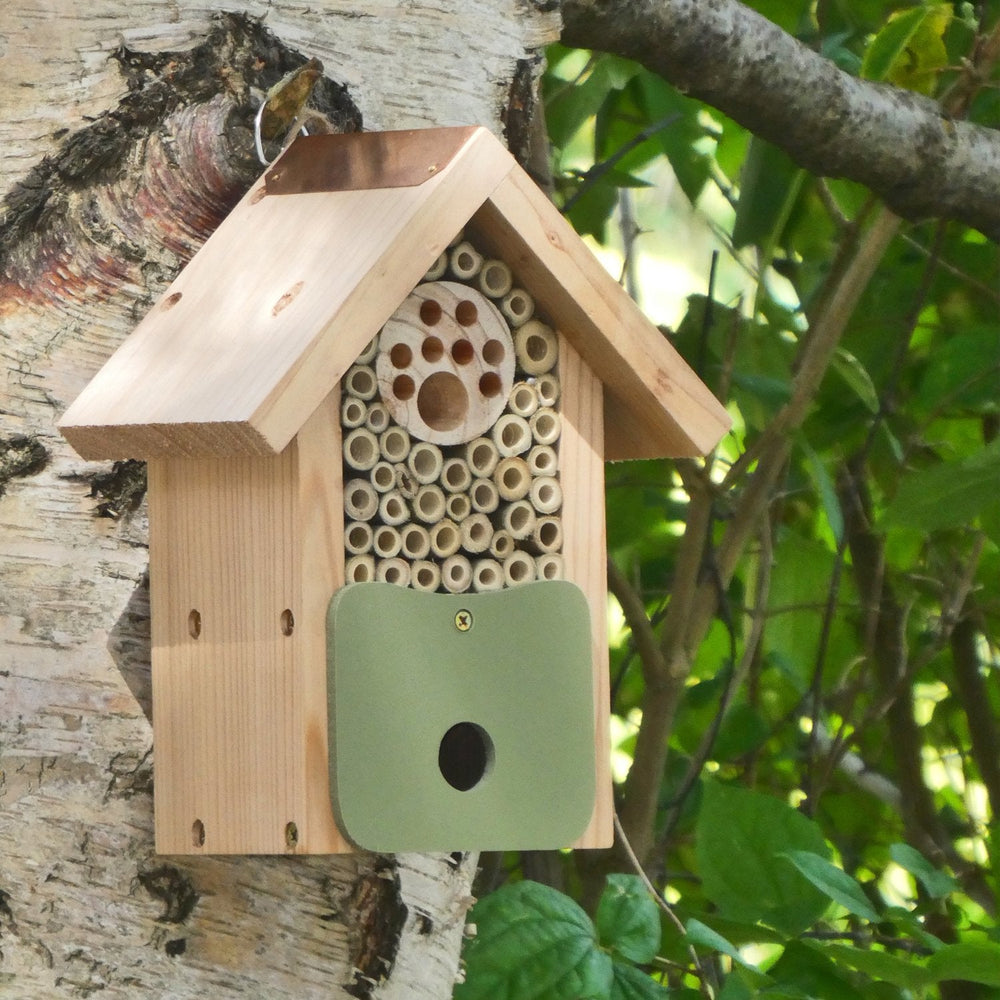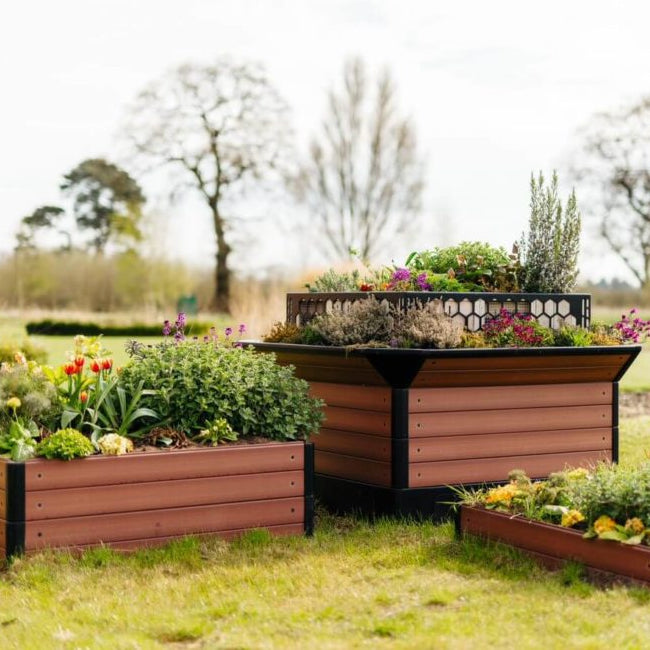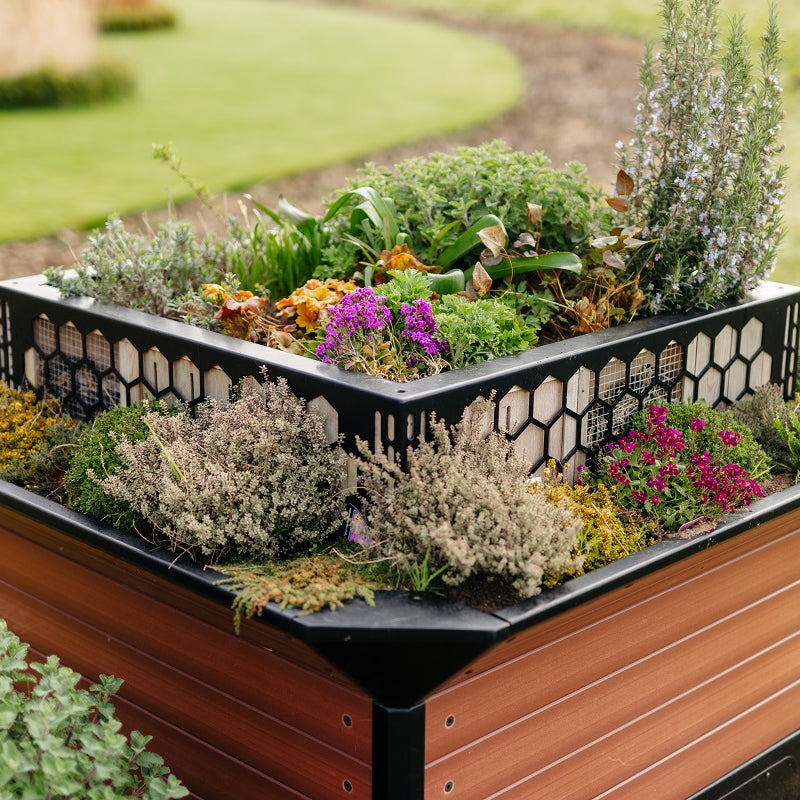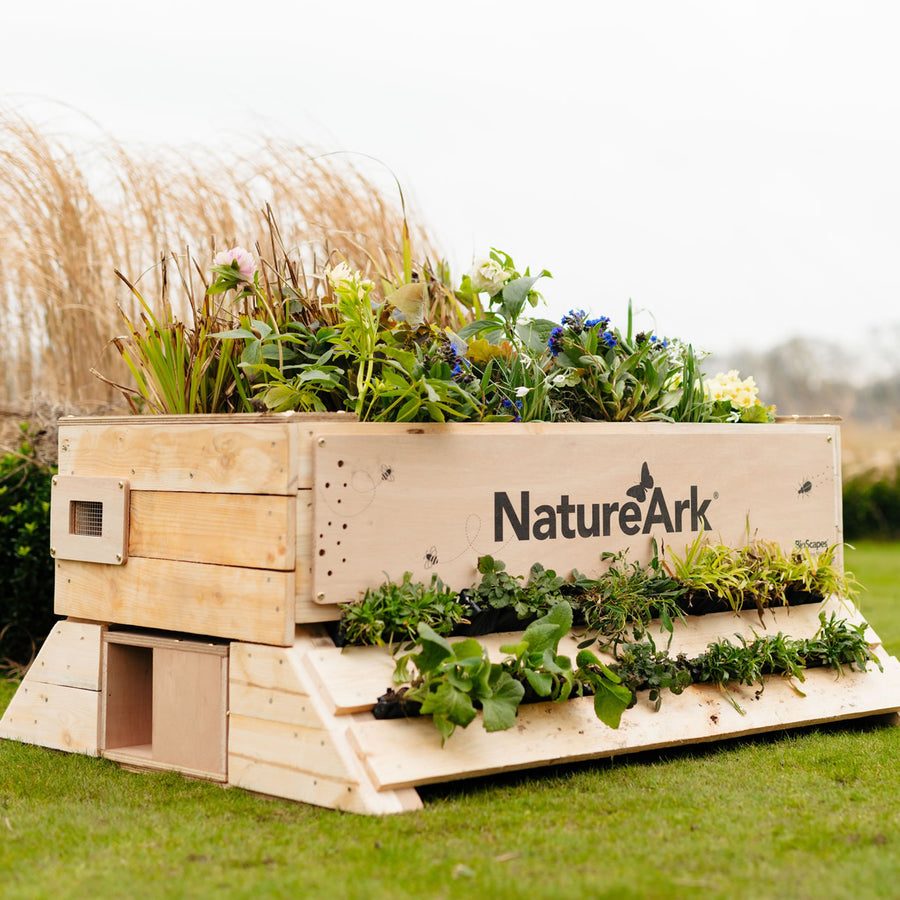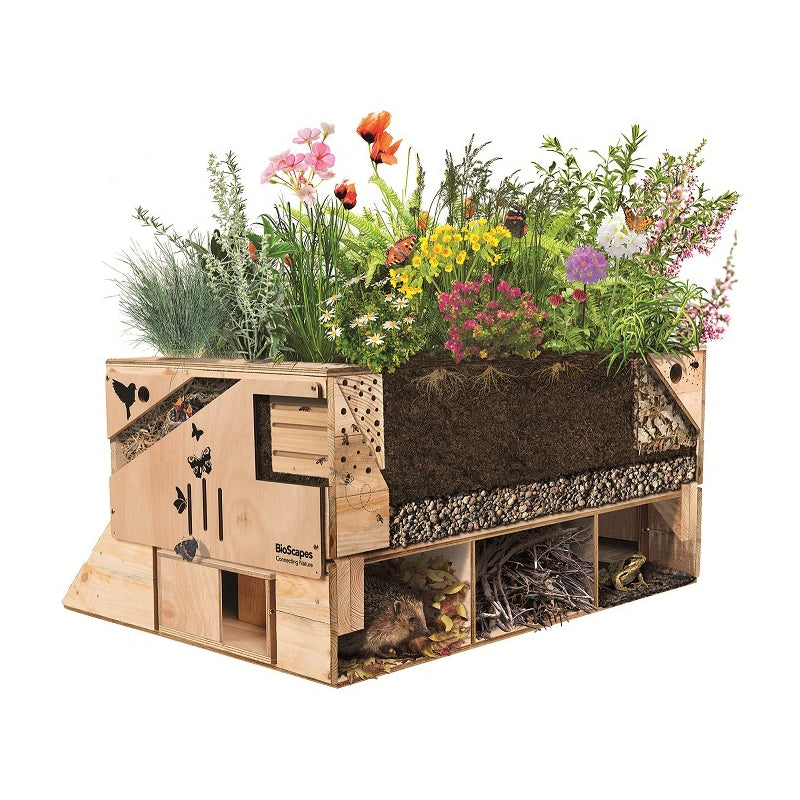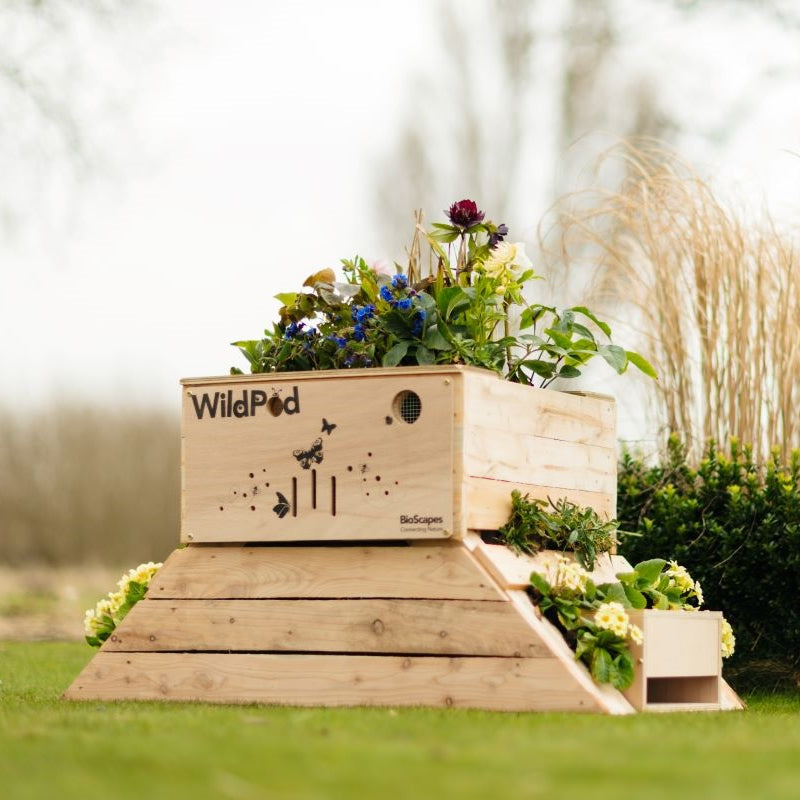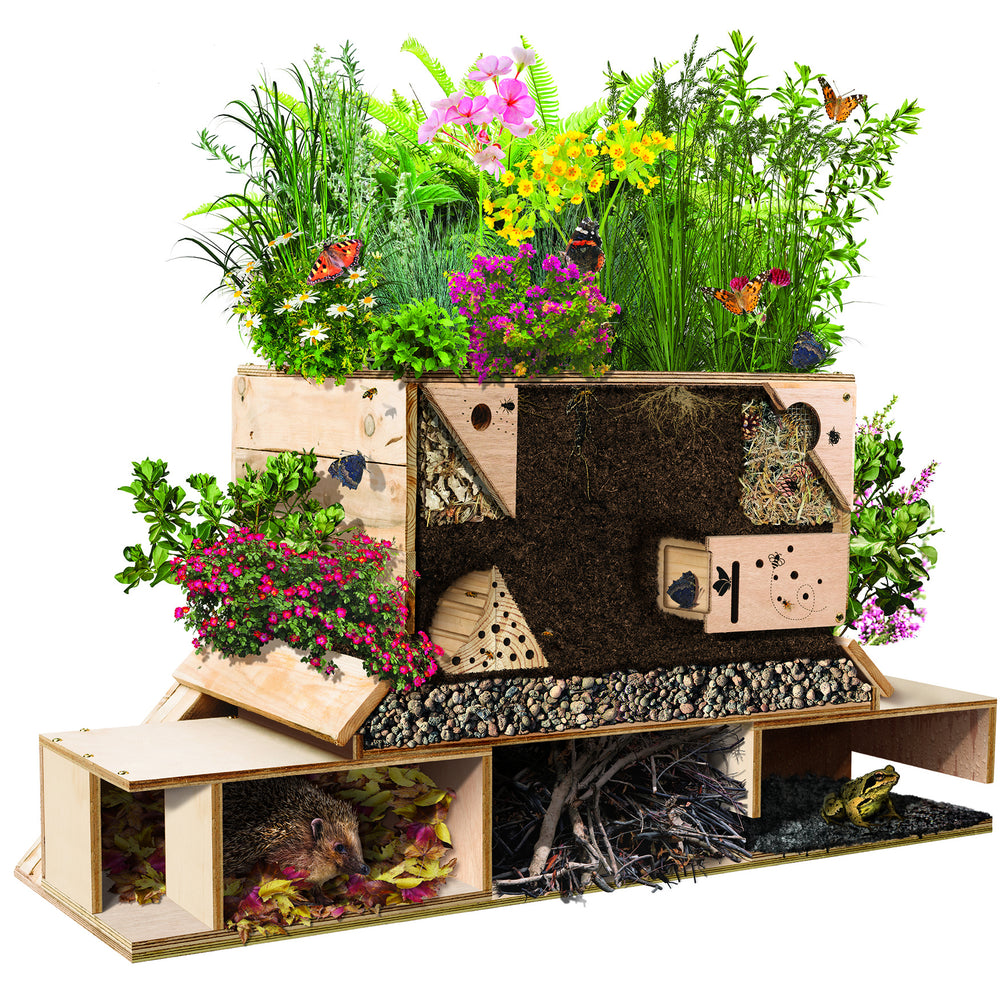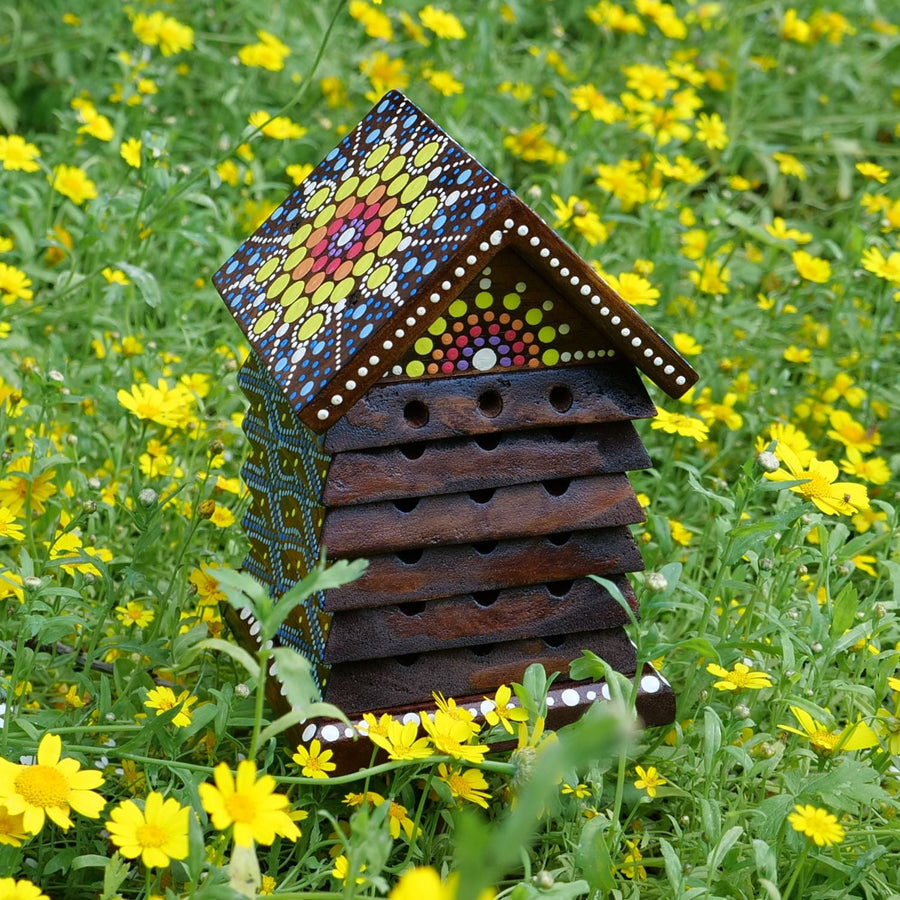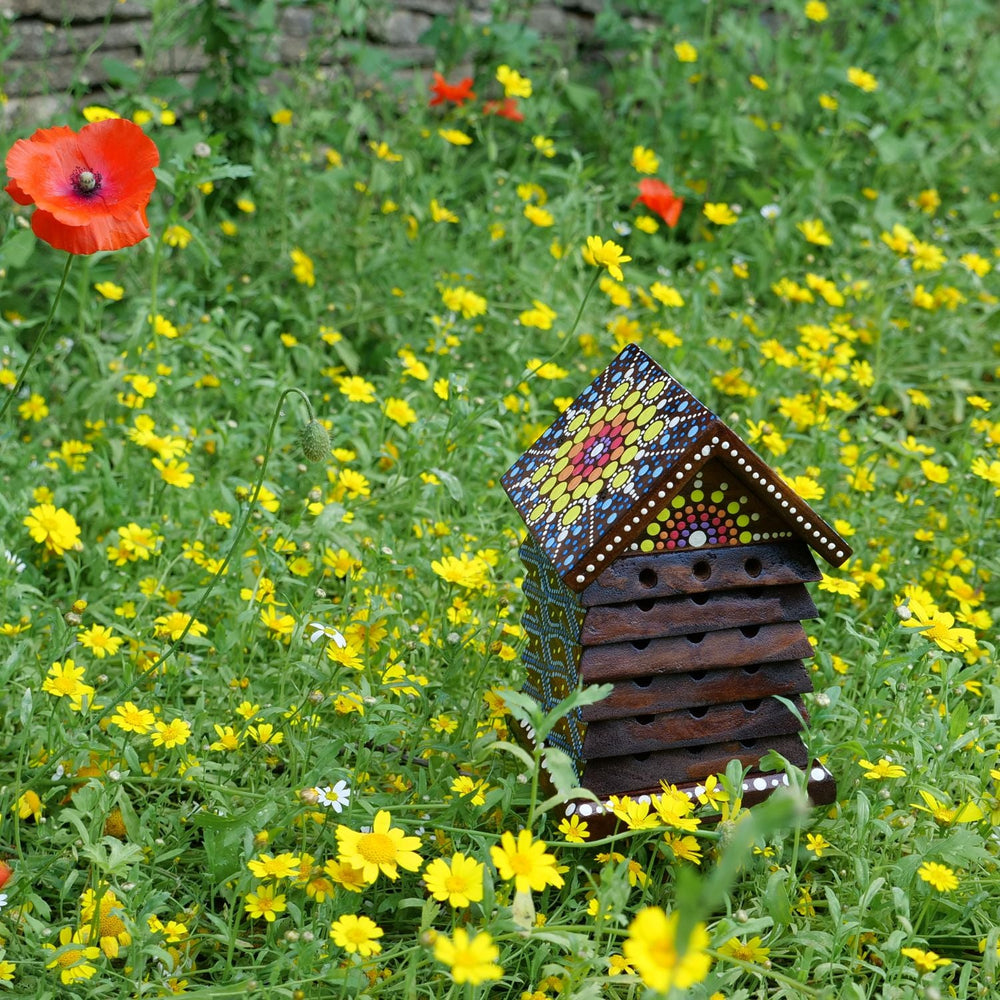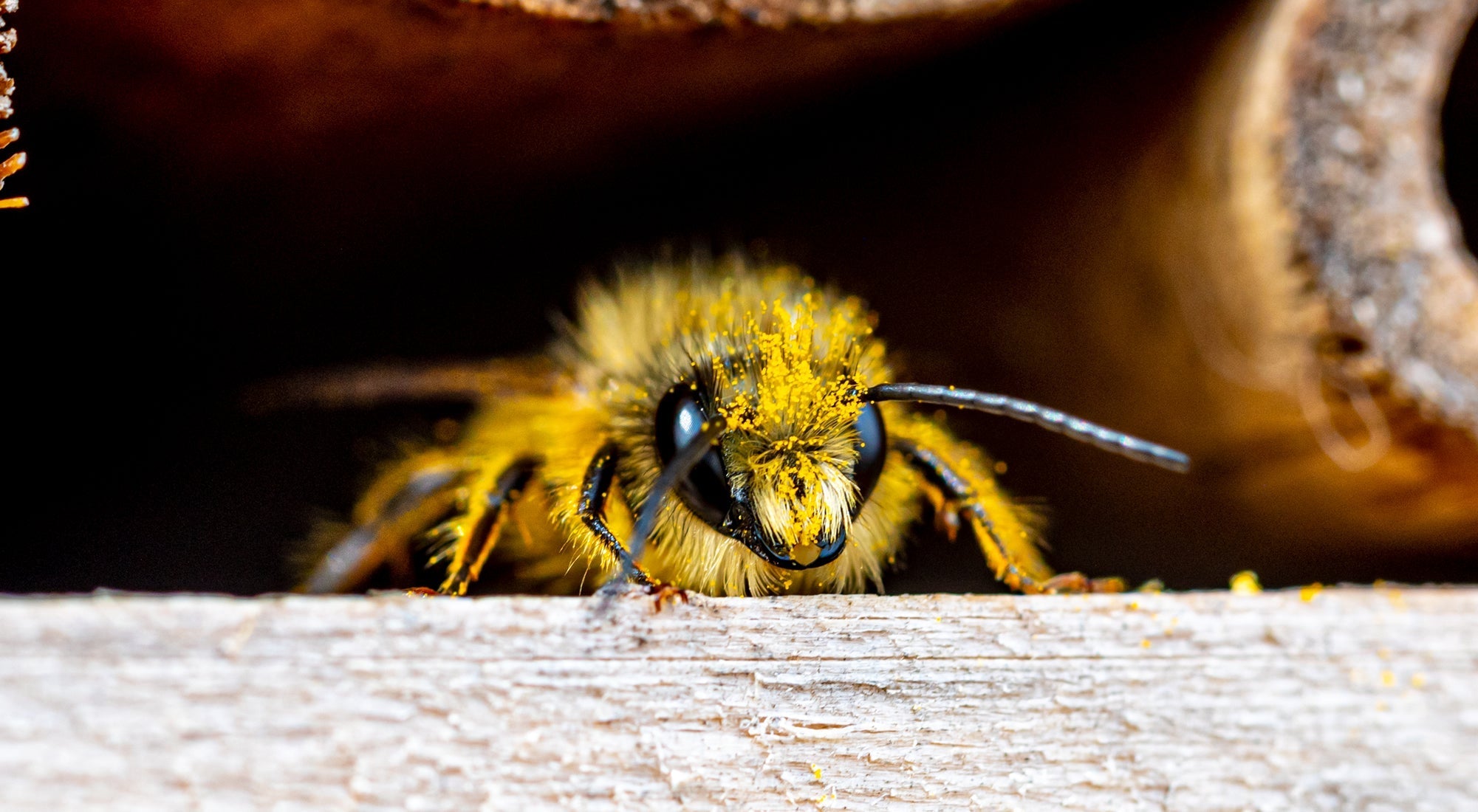
Bug Houses & Hotels
Our gardens are home to thousands of insect species, many of which help maintain a healthy ecosystem. Predatory insects like ladybirds and lacewings help control pests such as aphids and blackflies. Decomposers like beetles and woodlice break down organic matter, enriching the soil. Pollinators, including bees and butterflies, support plant growth and food production. We can encourage these beneficial insects through planting and bug houses for garden biodiversity and natural balance.
What Is a Bug House?
A bug house, also known as an insect hotel, is a structure designed to provide shelter and nesting spaces for beneficial insects and other insects essential to a thriving garden. Typically made from natural and recycled materials like wood, bamboo, and dried leaves, these houses feature compartments tailored to different species. Bug houses support biodiversity by attracting pollinators, pest-controlling insects, and essential wildlife while reducing the need for pesticides.
Why Should You Add a Bug Hotel to Your Garden
- Encourages Pollinators: Bee houses are great for attracting solitary bees, and offer nesting spaces, increasing pollination and supporting plant growth. A well-pollinated garden leads to healthier flowers, fruits, and vegetables, ensuring your garden thrives all year round.
- Natural Pest Control: Bug houses attract helpful insects, reducing the need for pesticides. These creepy crawlies provide natural pest control, protecting plants while keeping the ecosystem balanced.
- Supports Garden Biodiversity: A garden that is home to different insect species strengthens the food chain, benefiting birds, small mammals, and plant health, contributing to a more resilient and self-sustaining ecosystem.
- Provides Year-Round Shelter: Insects rely on safe spaces to survive harsh weather conditions, hibernate, and lay eggs. A bug house protects them during colder months while offering essential nesting spaces in spring and summer, ensuring a thriving population of other insects.
Choosing the Right Insect House and FAQs
Selecting the right insect house depends on your garden space, the species you want to attract, and the materials that ensure durability.
-
Size & Design: Smaller insect houses are ideal for patios and balconies, while larger multi-chamber bug hotels work best in wildlife-friendly gardens.
-
Materials: Choose FSC-certified wood and breathable designs that make use of natural materials like bamboo canes and pinecones, to prevent moisture buildup, ensuring a safe and long-lasting shelter.
-
Maintenance: Insect houses require minimal upkeep, but you should clean them annually to remove debris and prevent parasites.
How do you maintain a bug house?
Check for damage, tighten loose parts, and replace decayed materials like wood and bamboo. Keep compartments dry and free from mould, as damp conditions deter insects.
What materials are best for a bug house?
The best bug houses use natural and recycled materials such as wooden blocks, bamboo canes and pinecones. These materials provide breathable, moisture-resistant shelter while supporting an eco-friendly, sustainable garden habitat.
What do I do if my bug house is attracting unwanted garden pests?
Try relocating it to a sheltered, less disturbed area near flowers or dense vegetation. Check that the materials are free from decay and clean the house annually to remove debris and prevent pests. Keeping it off the ground and dry also helps deter unwanted visitors.
How does an insect house benefit frogs and other wildlife?
A well-placed insect house supports frogs and other wildlife by attracting insects that serve as a natural food source. Positioning it near a pond or damp area creates an ideal habitat, helping to sustain a diverse garden ecosystem.









